Slope illusion 14
Outdoor tilt illusion where an ascending slope appears to descend or a descending slope appear to ascend
e.g. Magnetic Hill in Canada; Wikipedia
since September 20, 2014
Slope illusions in Tsunan and Tokamachi, Niigata, Japan
There are as many as seven points of illusion in a single, nearly straight road!
August 14, 2013, reported by Akiyoshi Kitaoka and Seiichi Tsuinashi, supported by a JSPS kaken-hi grant and R-GIRO
1.1 The lowermost point: the upper view
It is a pity that we forgot to take photos...
1.2 The lowermost point: the lower view
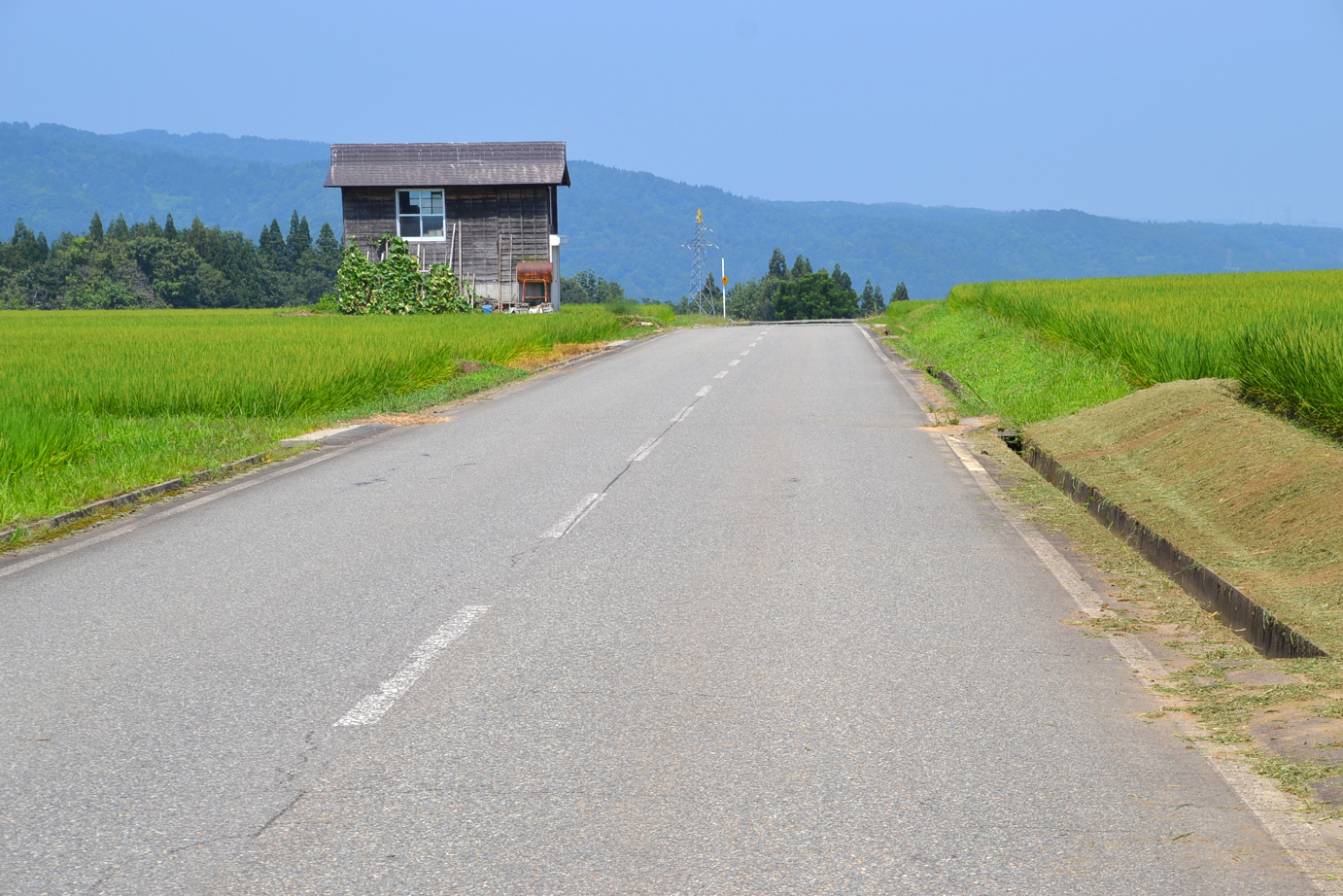
The slope appears to be an ascent, though it is a descent. It is a pity that we did not record the data...
Copyright Akiyoshi Kitaoka 2013 (August 14)
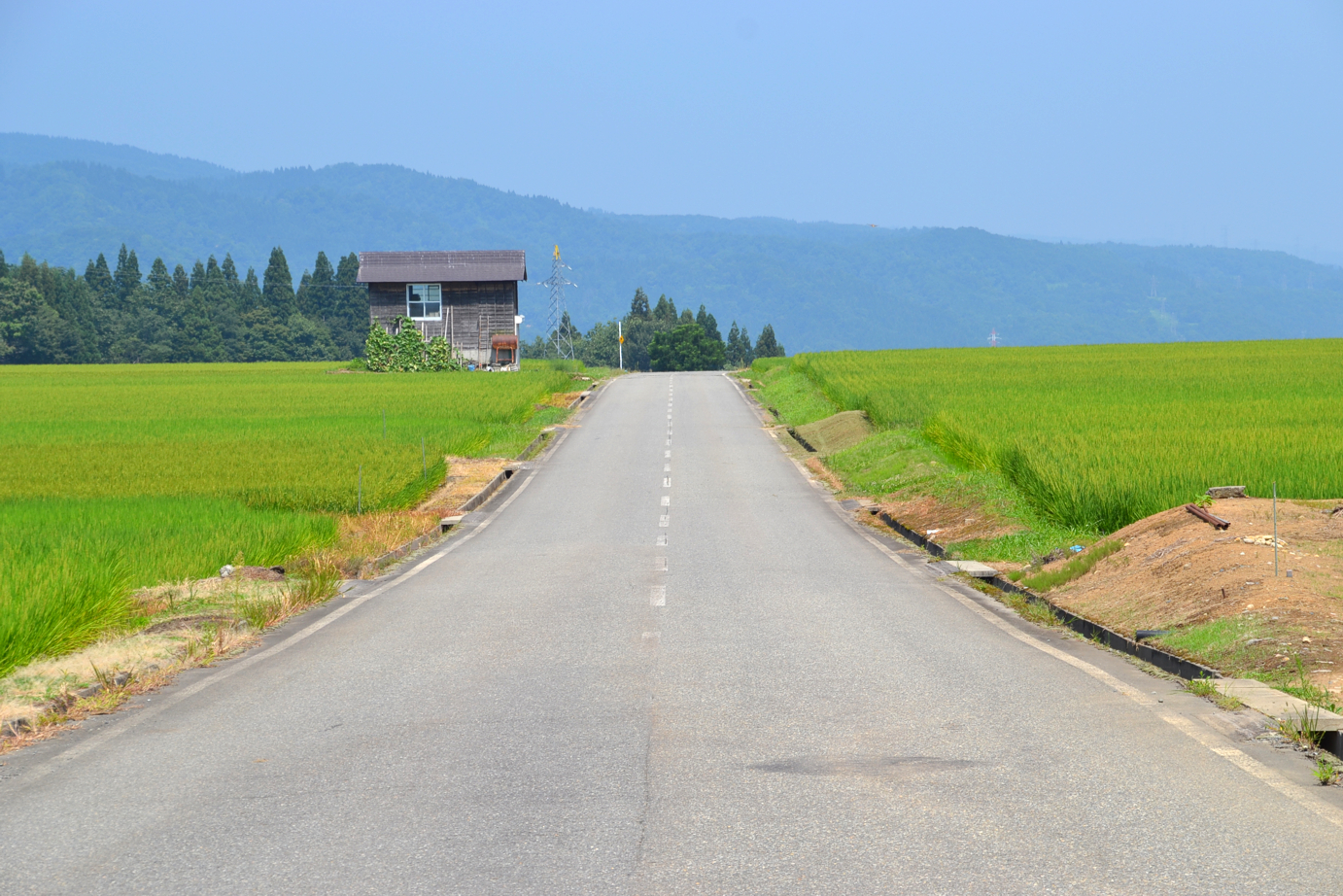
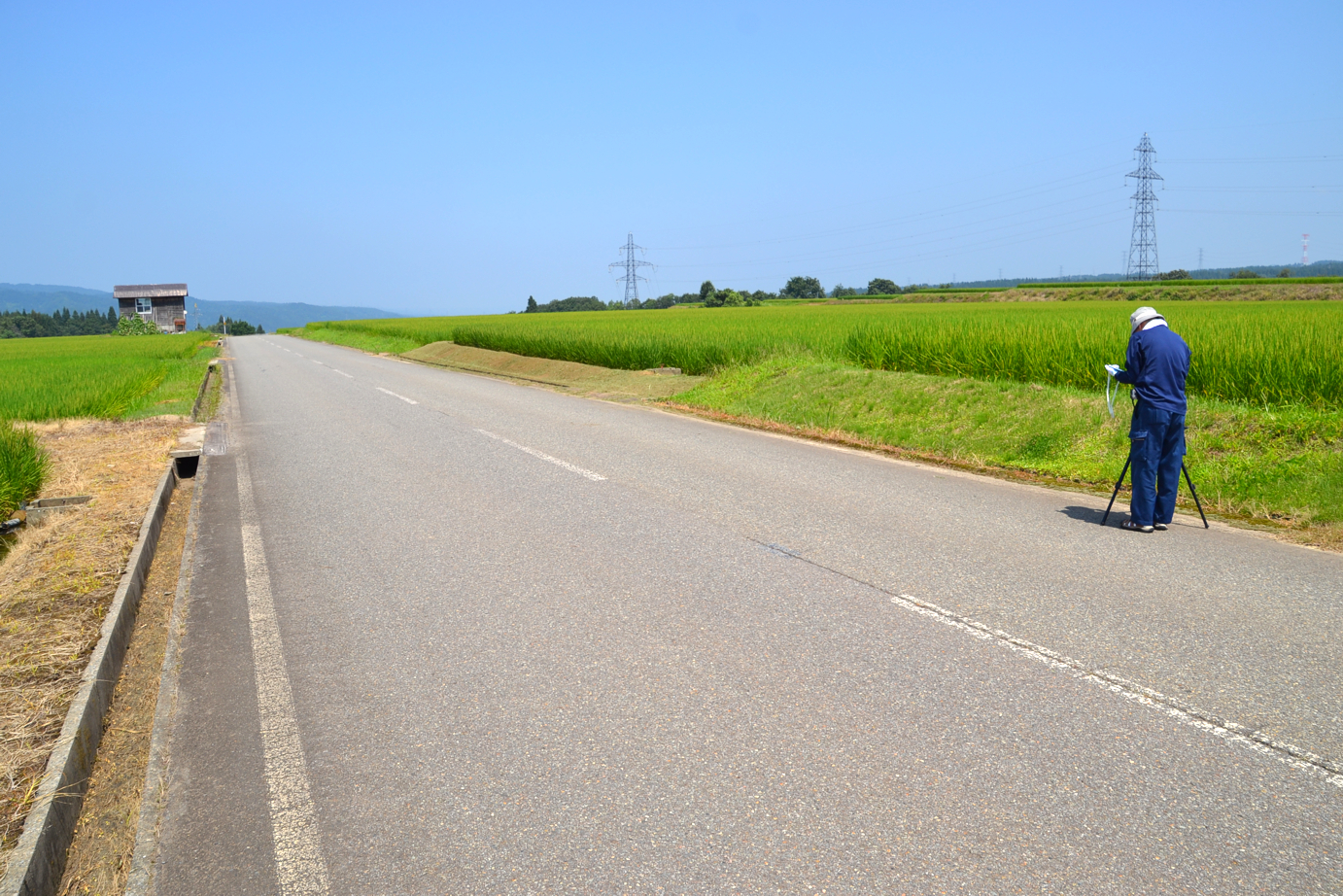
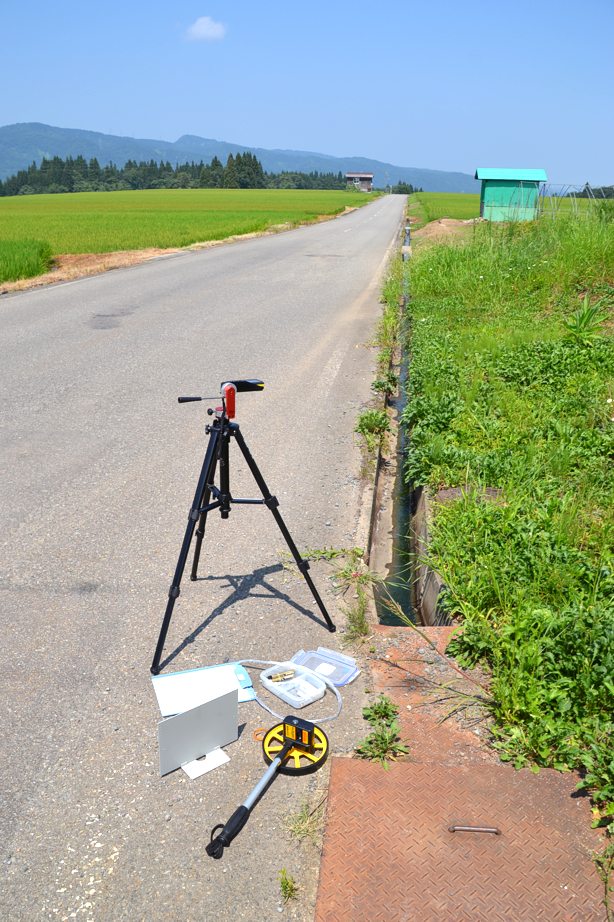
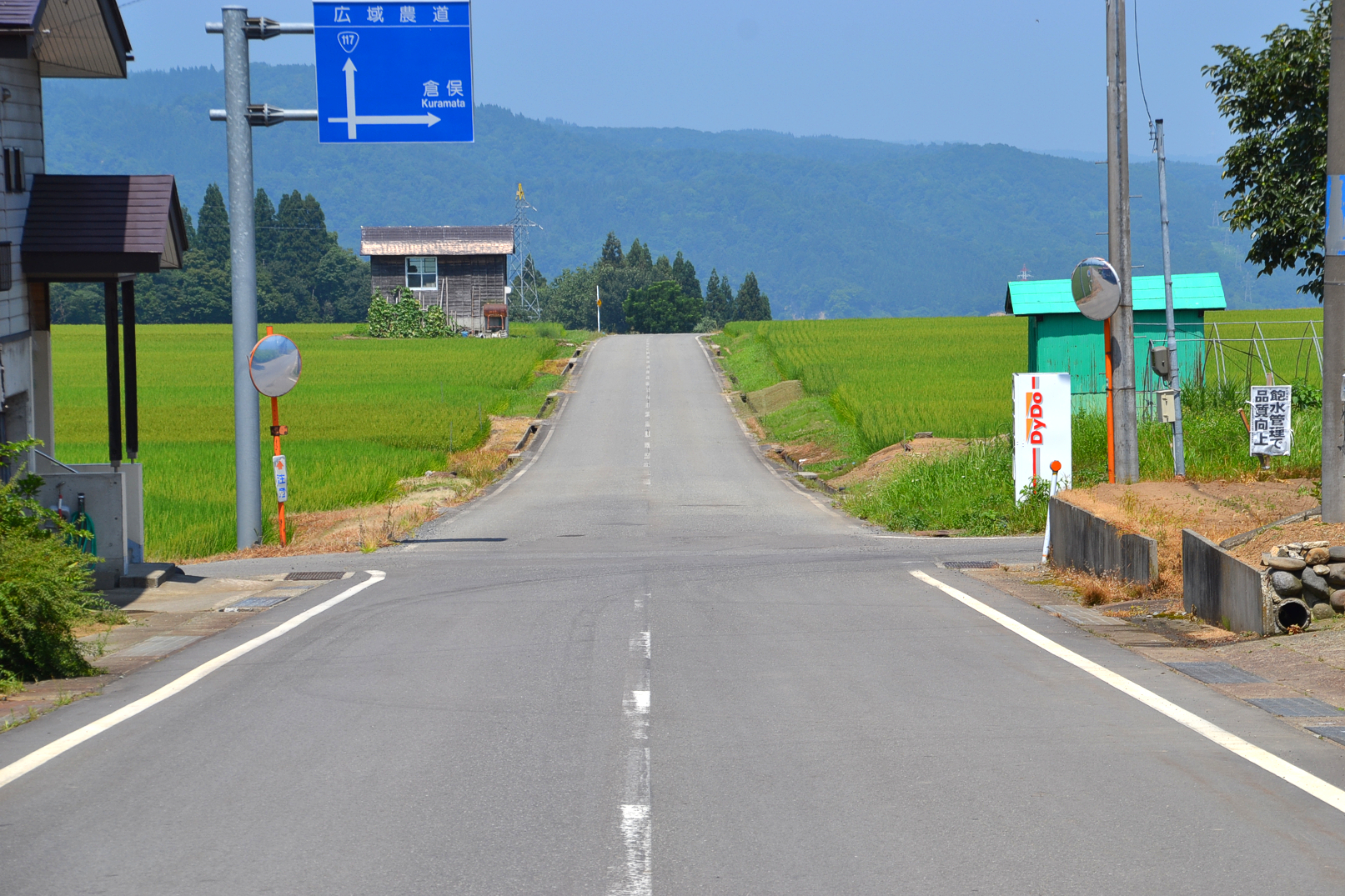
2.1 The second lowermost point: the upper view
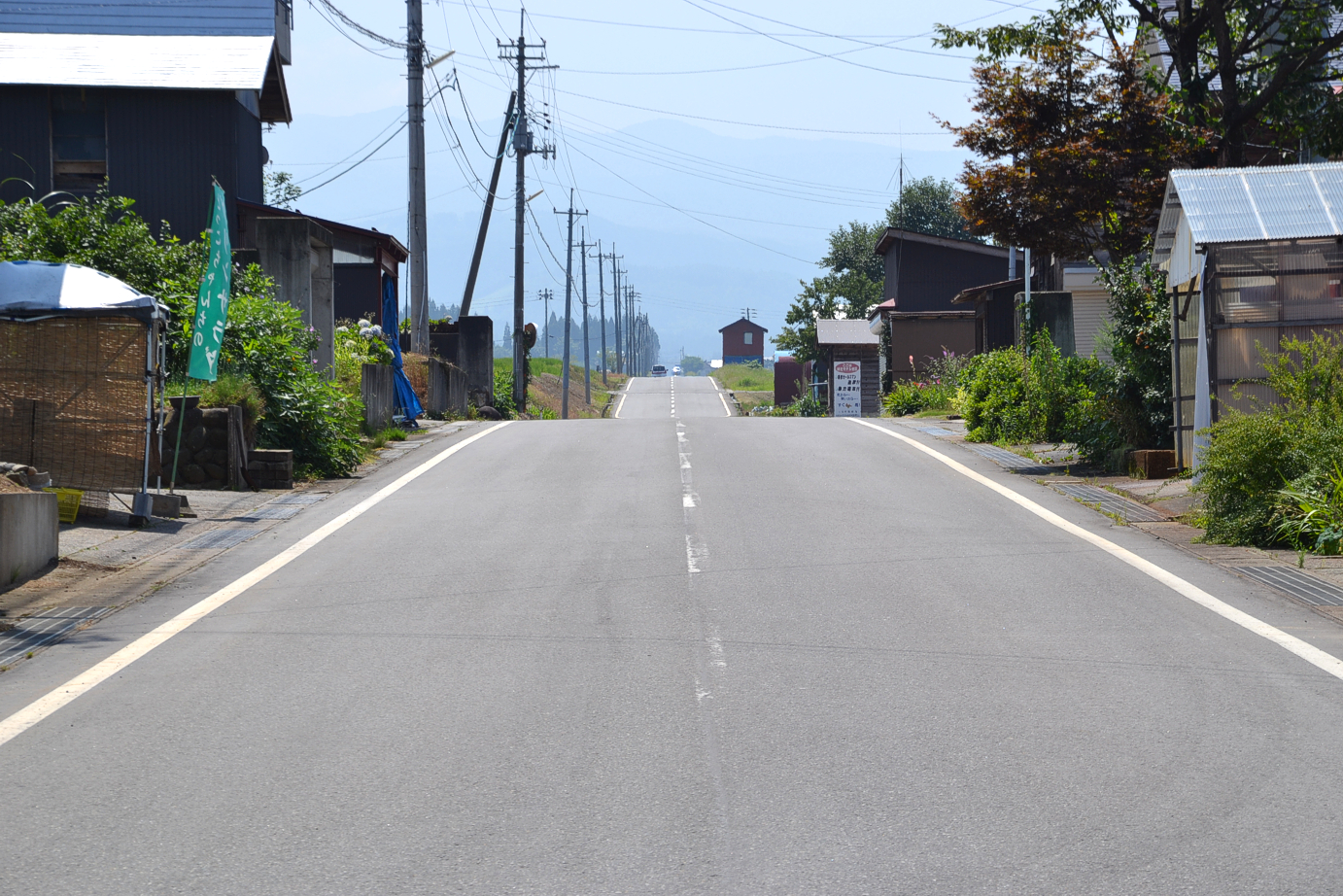
The slope behind the crest is not viewed but appears to be a descent. Actually, the invisible slope is an ascent of 0.8° degee (1.4%) and the slope in front of the crest is an ascent of 2.6° degee (4.5%).
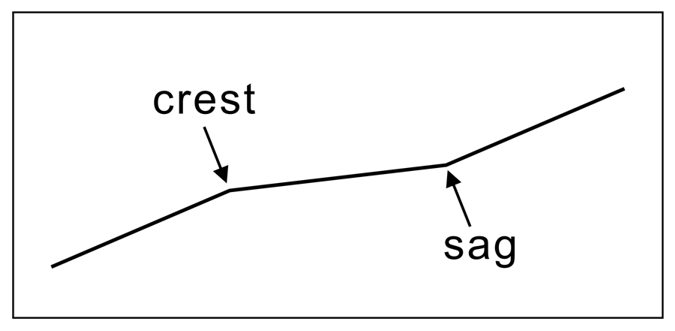
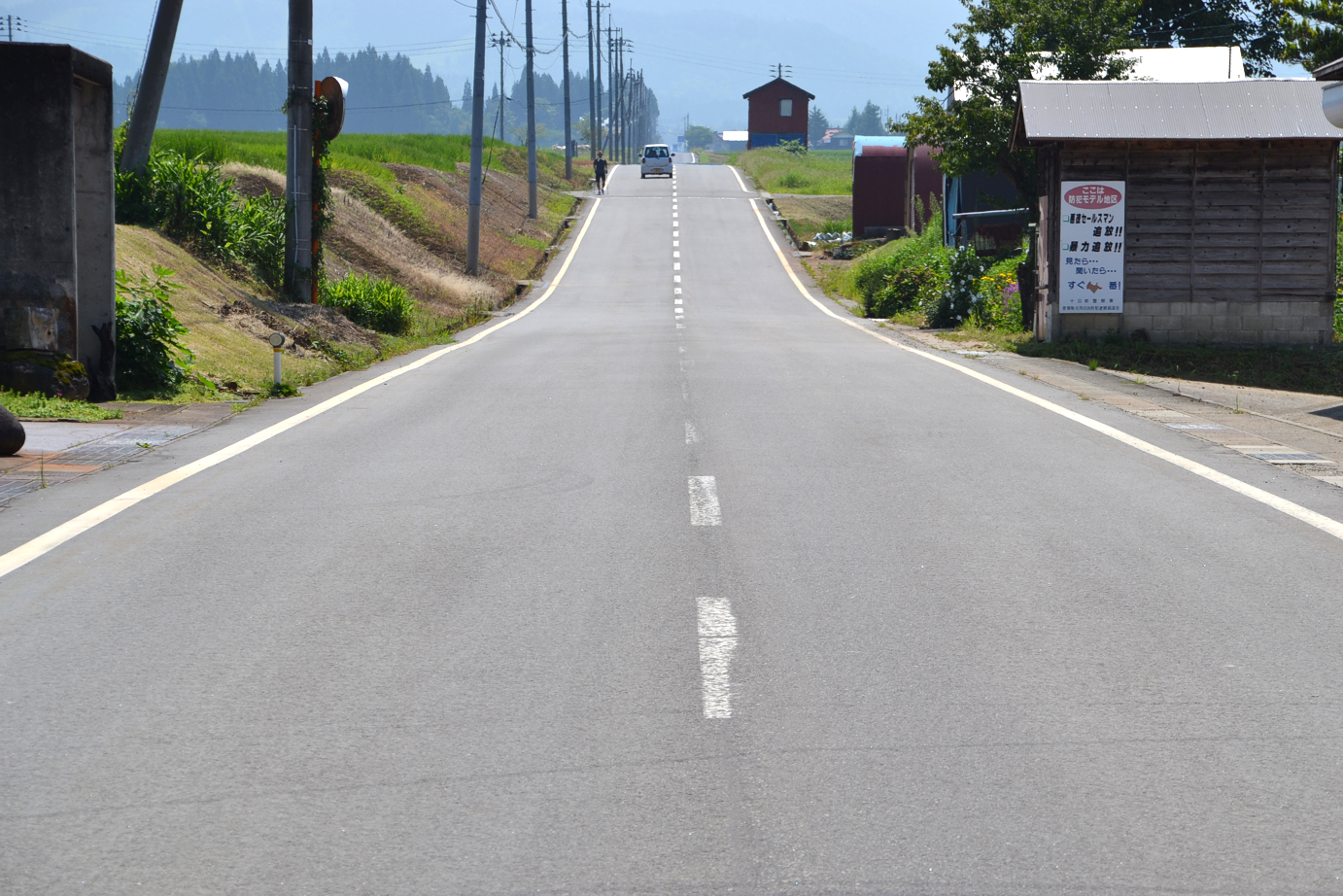
The slope in front of the sag may appear to be a descent but it is actually an ascent of 0.8° degee (1.4%). The slope behind the sag is an ascent of 2.8° degee (4.9%).
2.2 The second lowermost point: the lower view
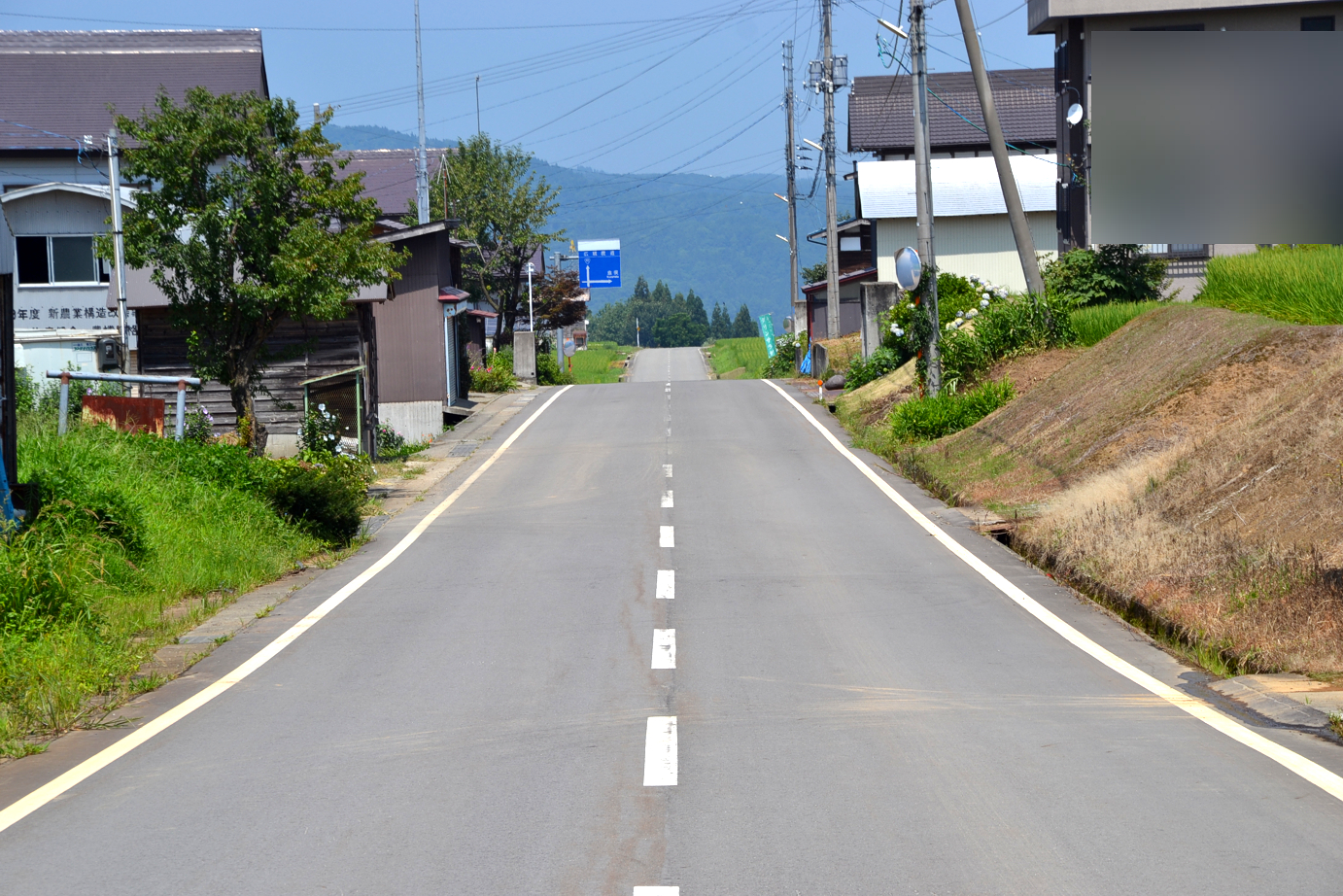
The slope in front of the sag may appear to be an ascent but it is actually a descent of 0.8° degee (1.4%).
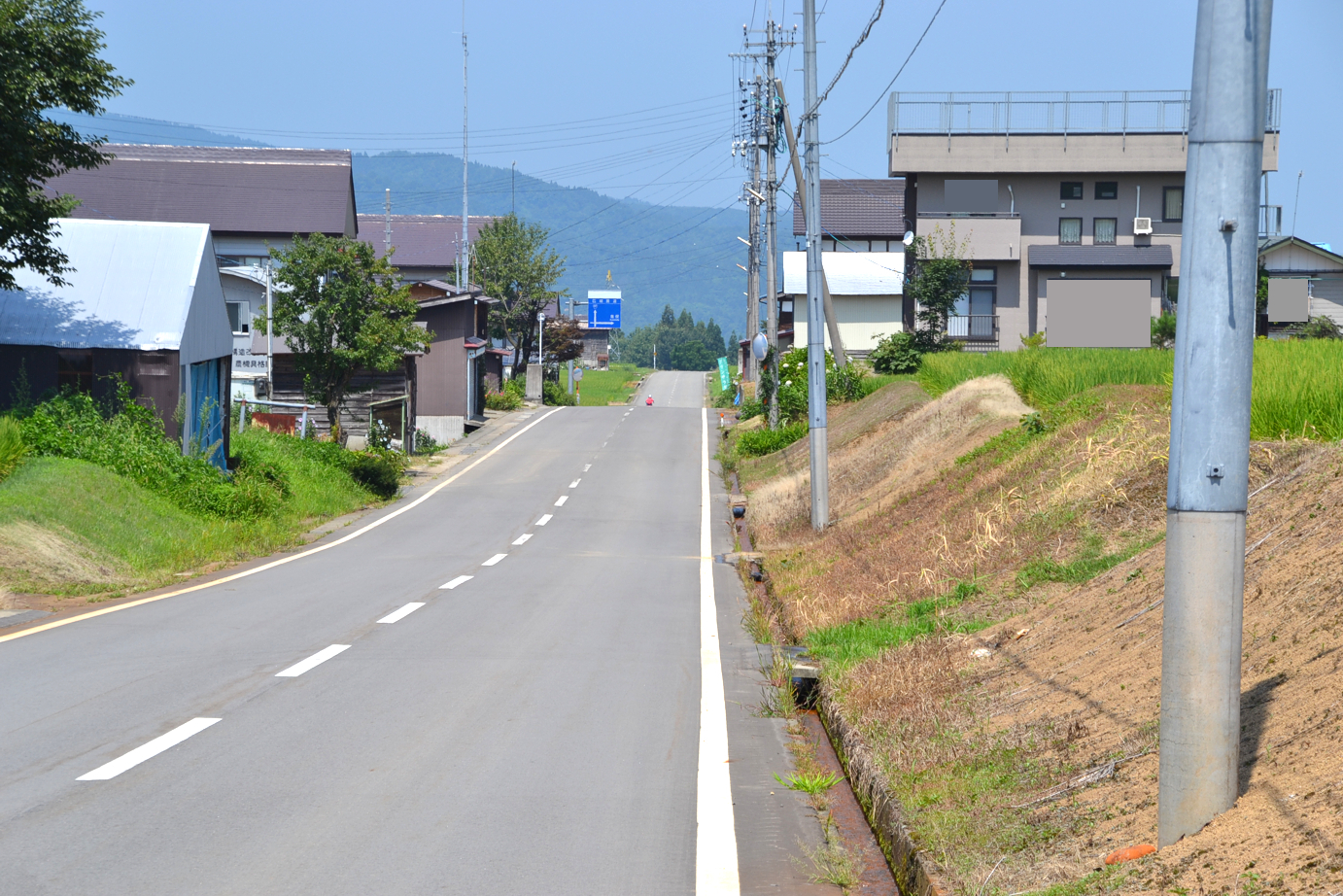
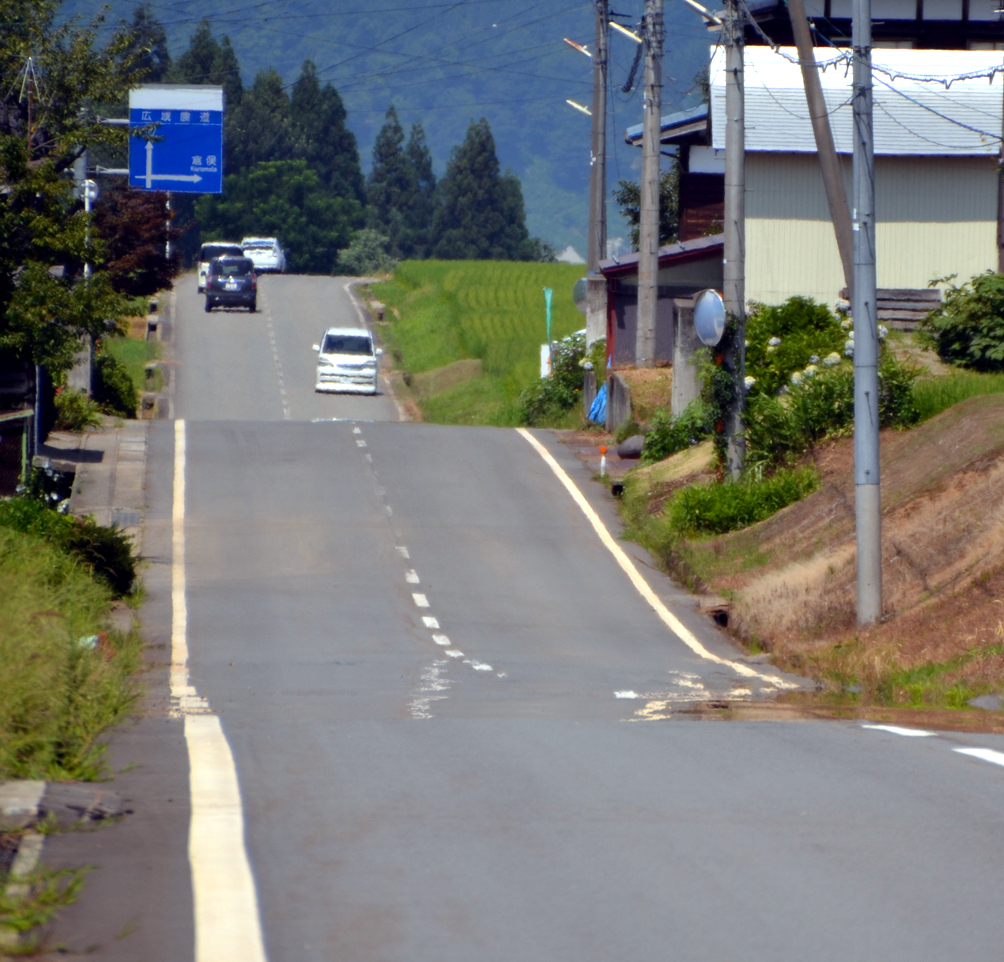
3.1 The third point from the lowermost one: the upper view
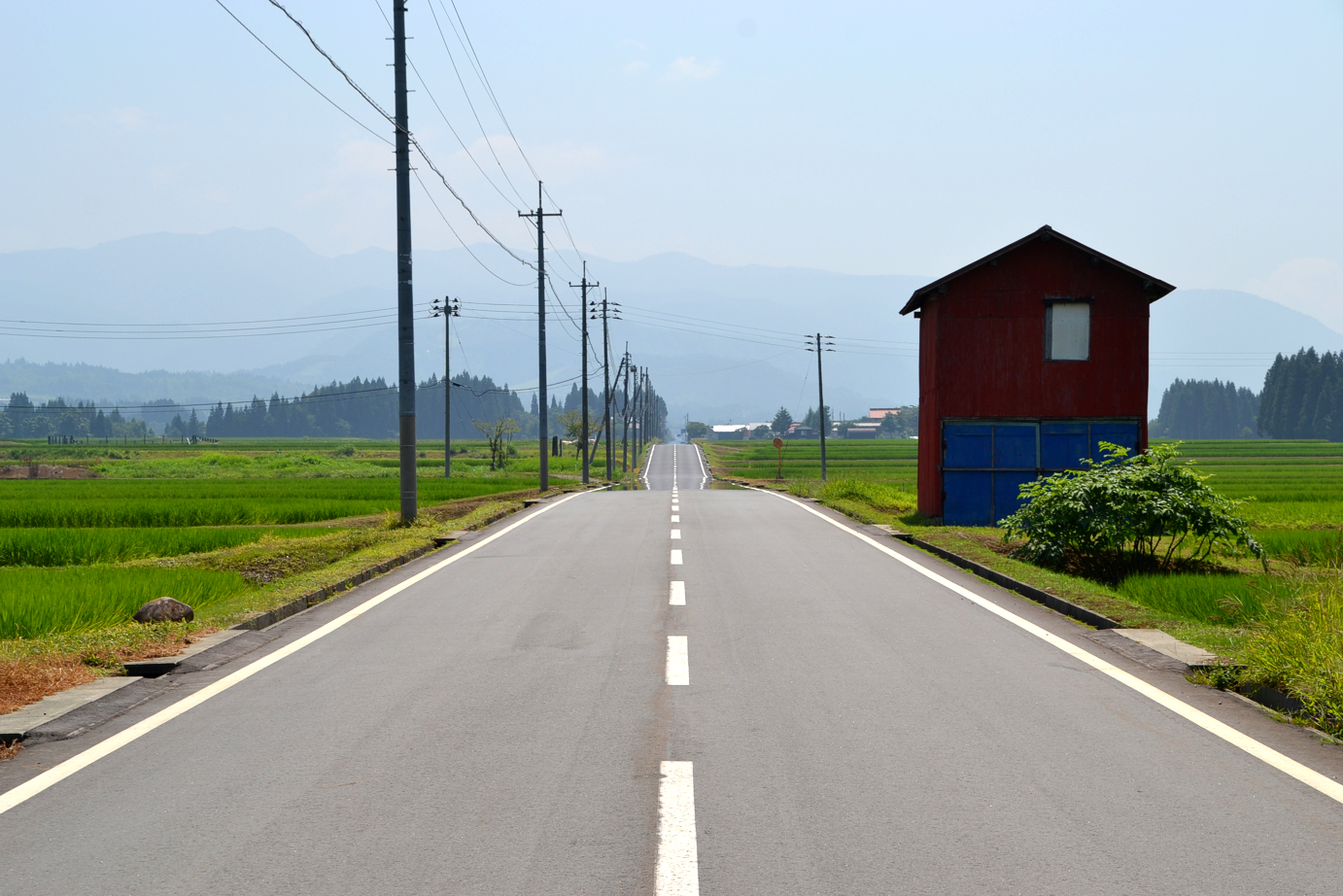
The slope where a mirage is viewed appears to be a descent but it is actually an ascent of 1.0° degee (1.7%). The slope in front of as well as that behind the sag are both ascents of 2.8° degee (4.9%).
Copyright Akiyoshi Kitaoka 2013 (August 15)
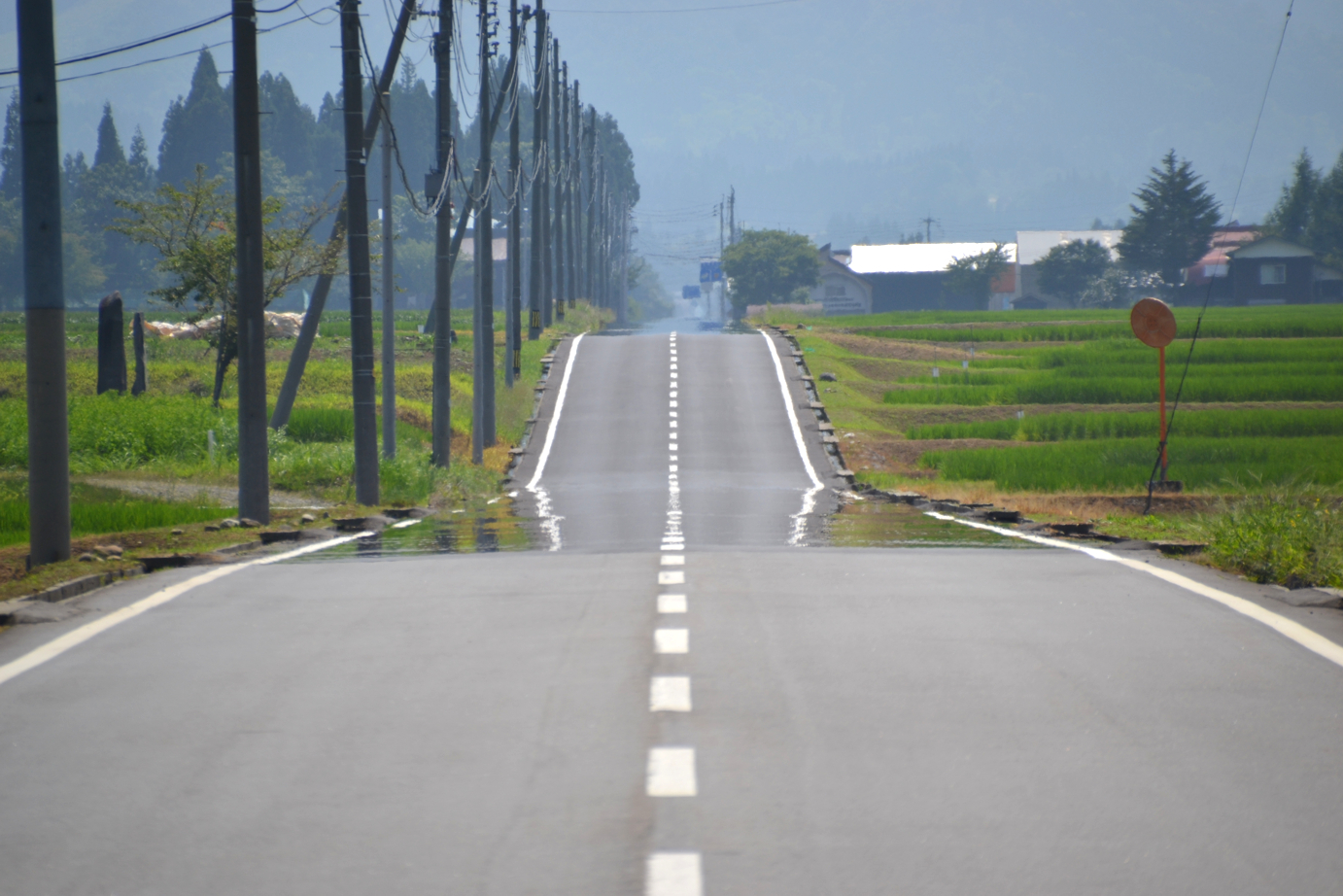
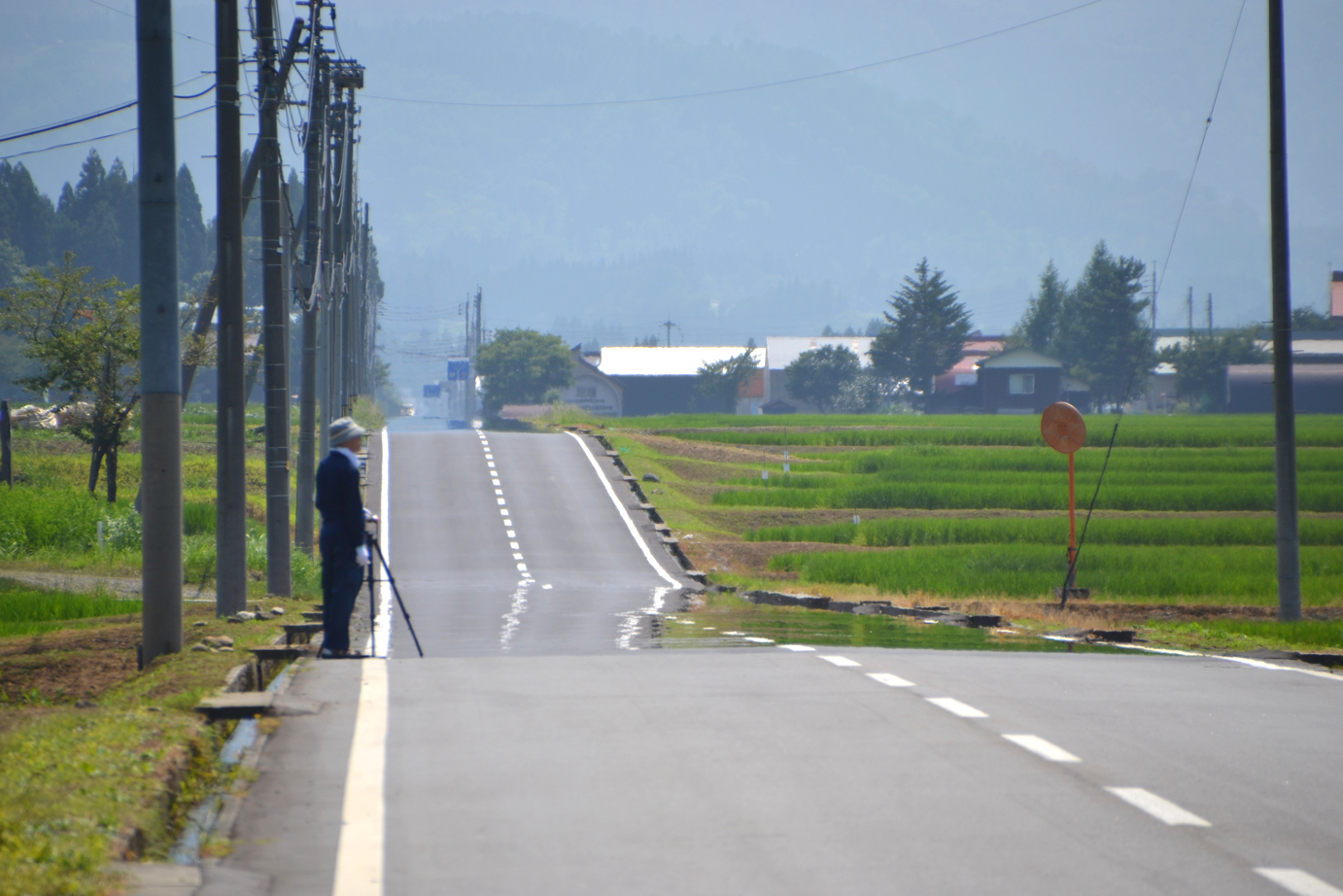
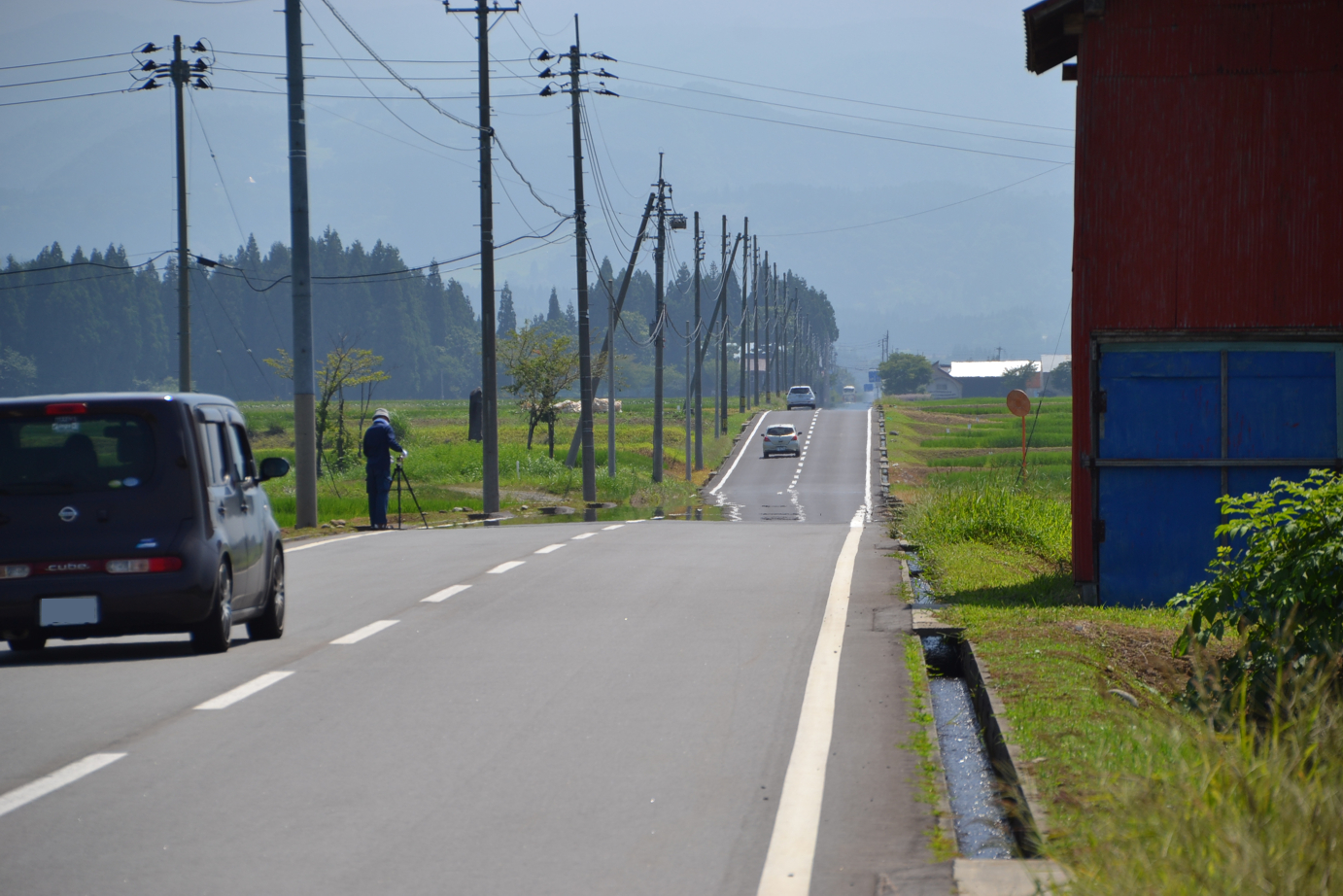
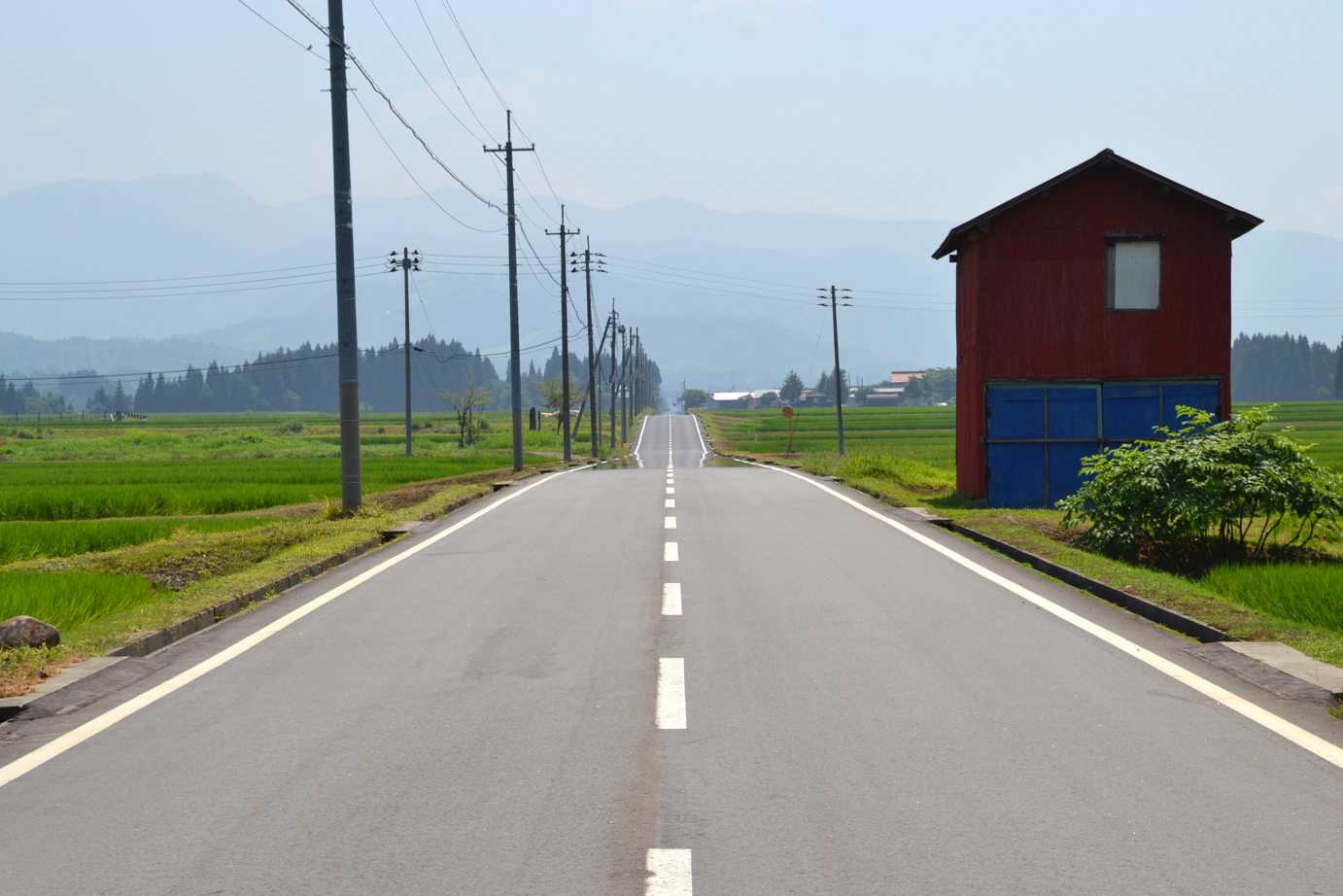
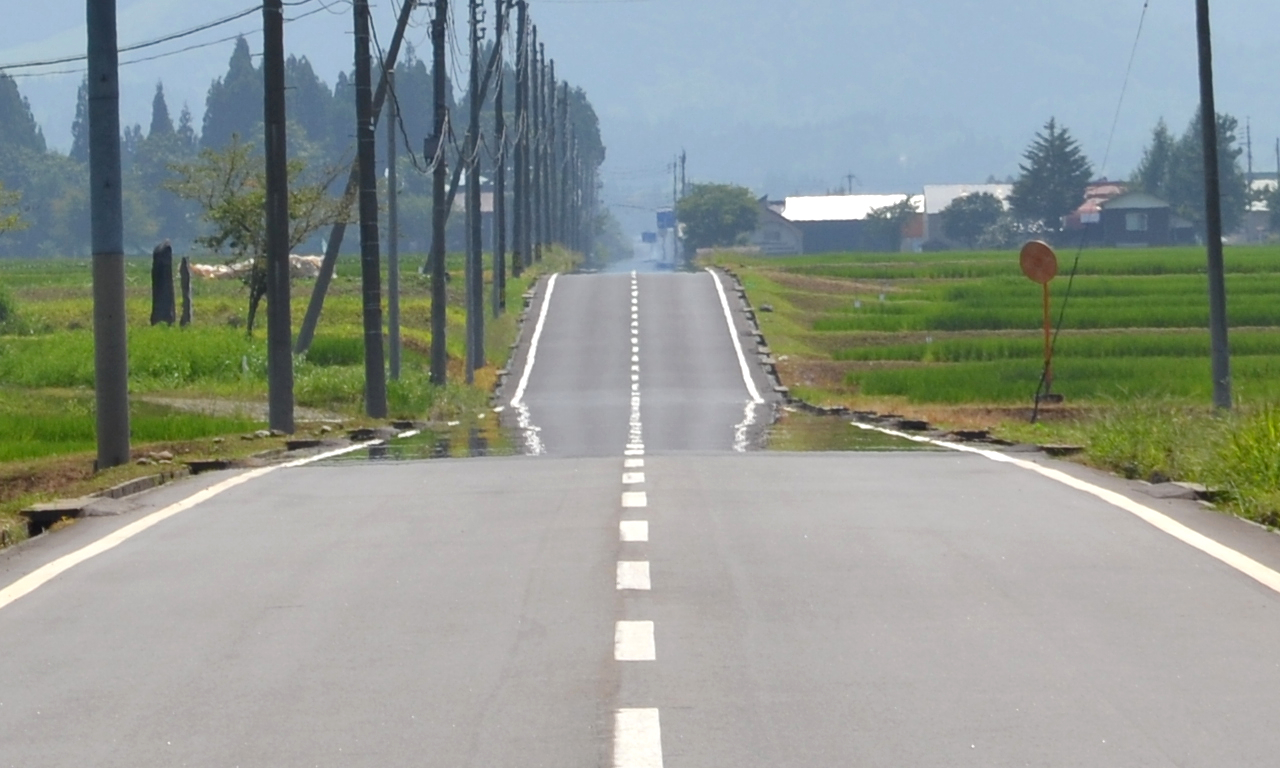
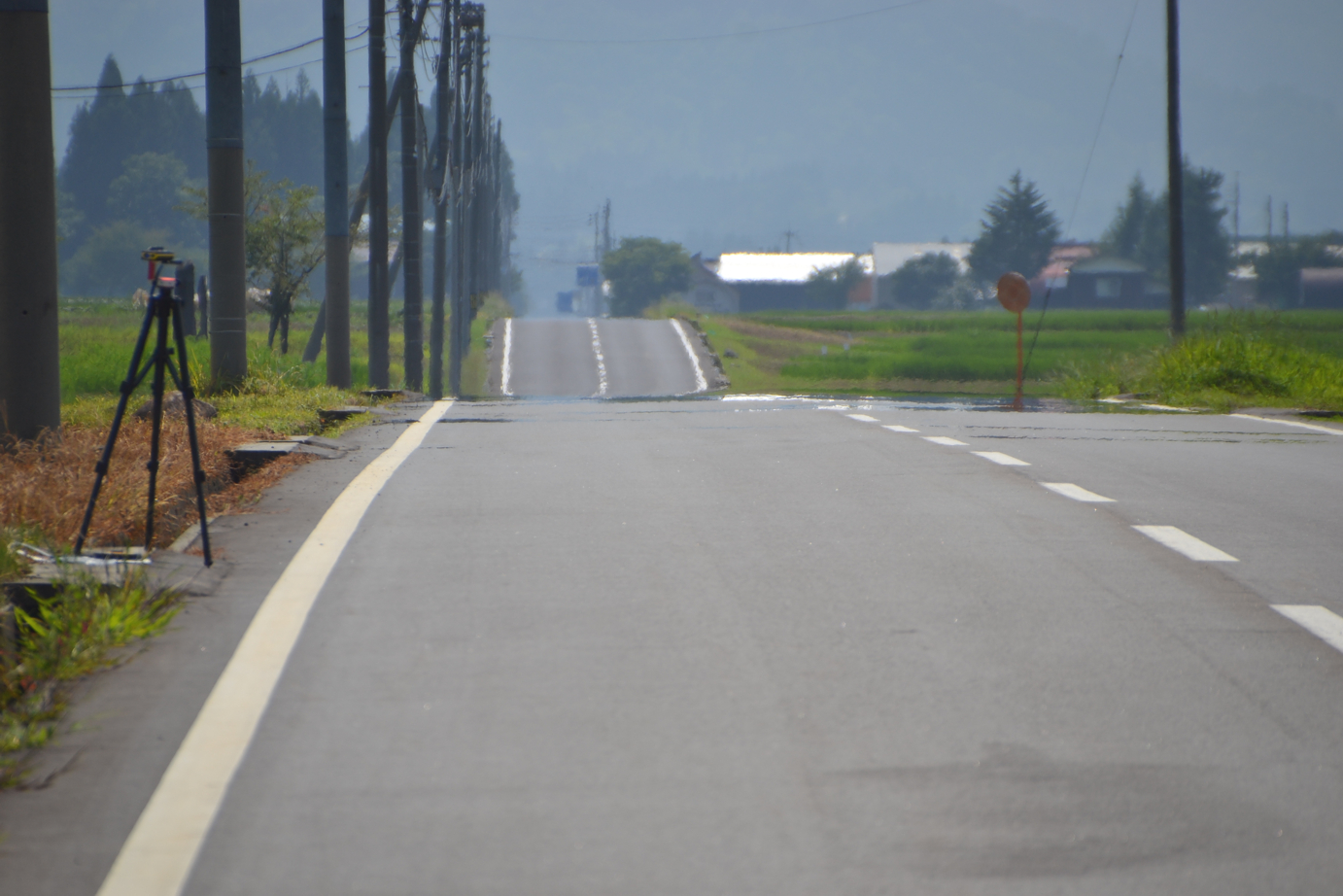
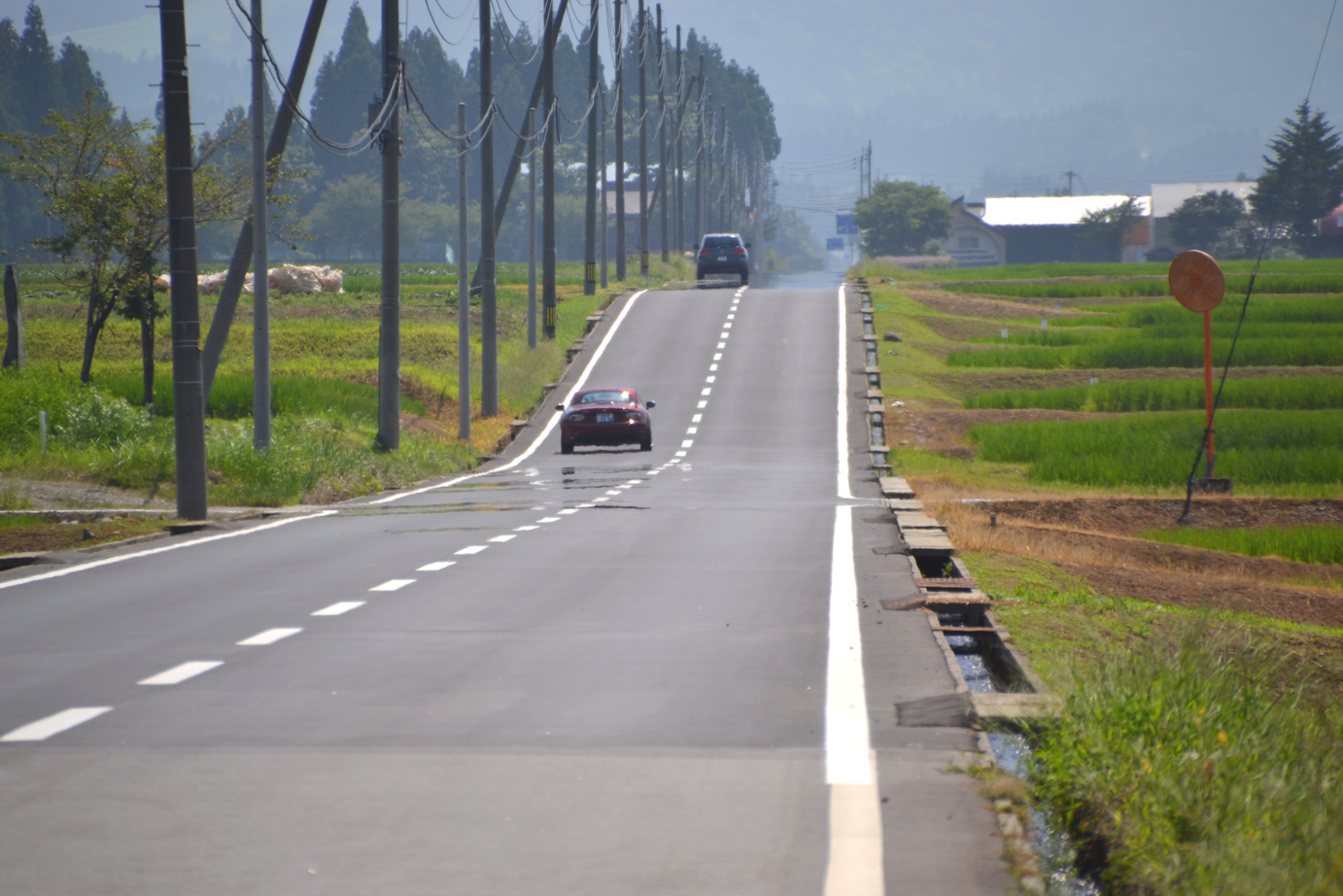
The slope in front of the sag appears to be a descent but it is actually an ascent of 1.0° degee (1.7%). The slope behind the sag is an ascent of 2.8° degee (4.9%).
3.2 The third point from the lowermost one: the lower view
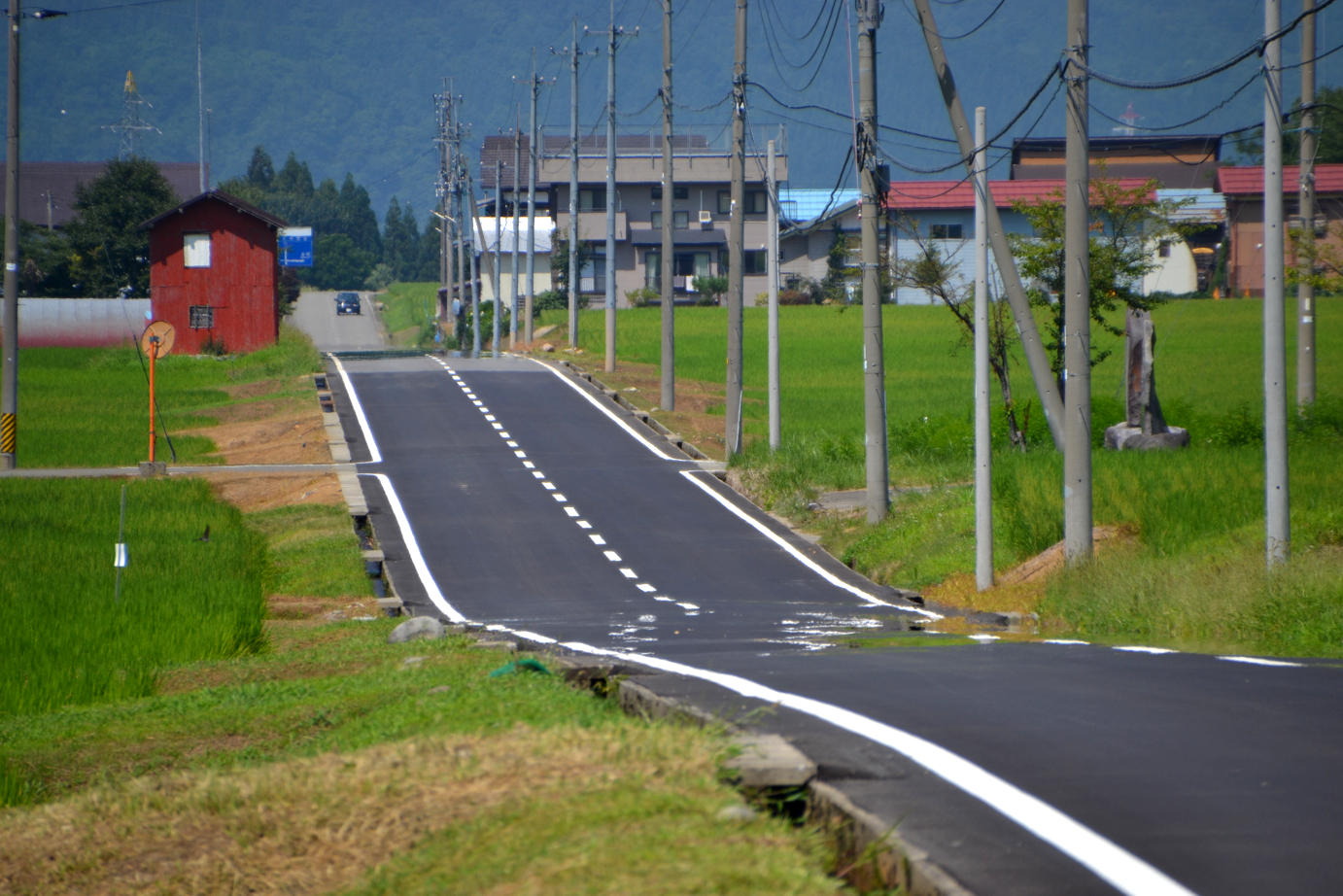
The slope between the two points where mirages are seen appears to be an ascent but it is actually a descent of 1.0° degee (1.7%).
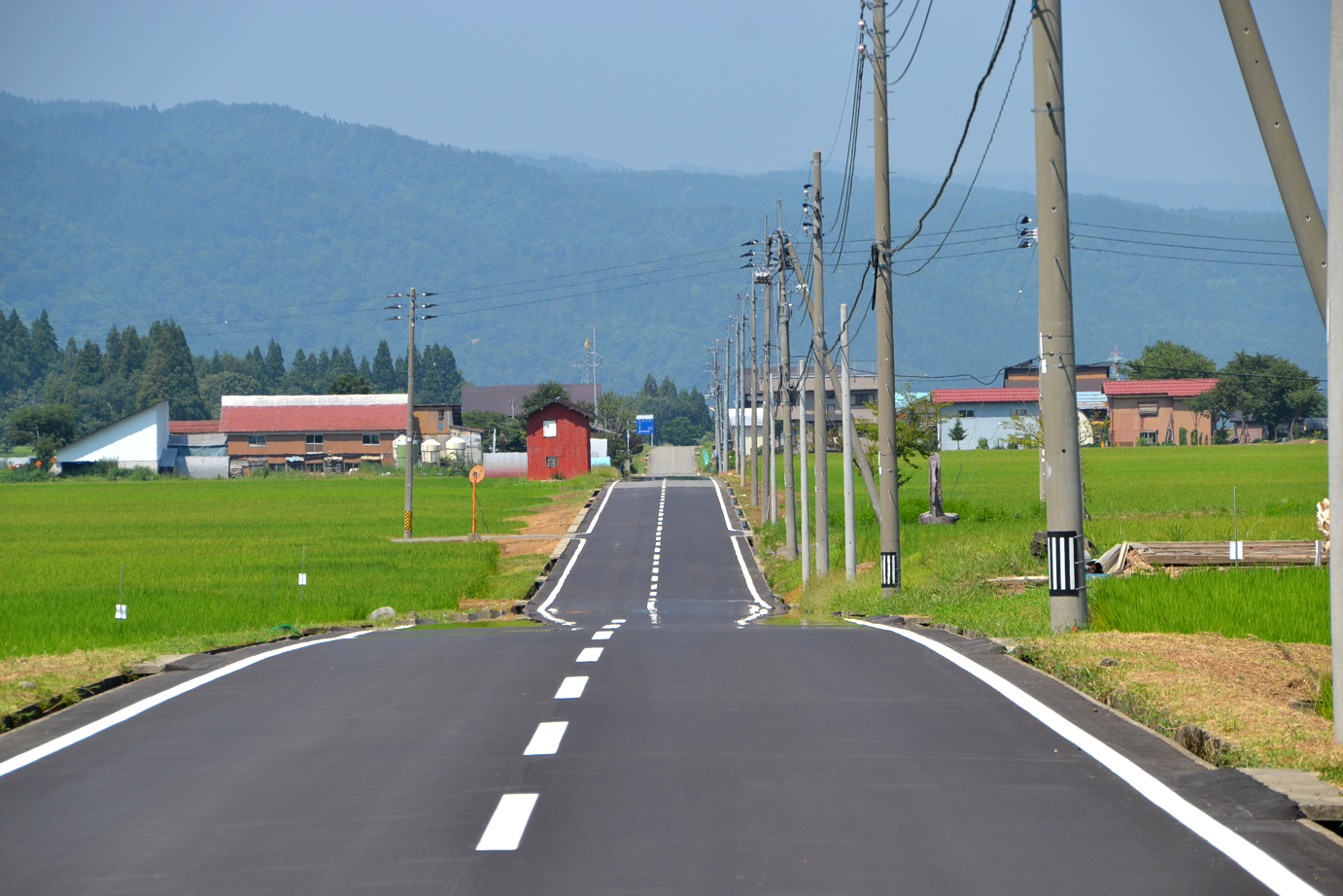
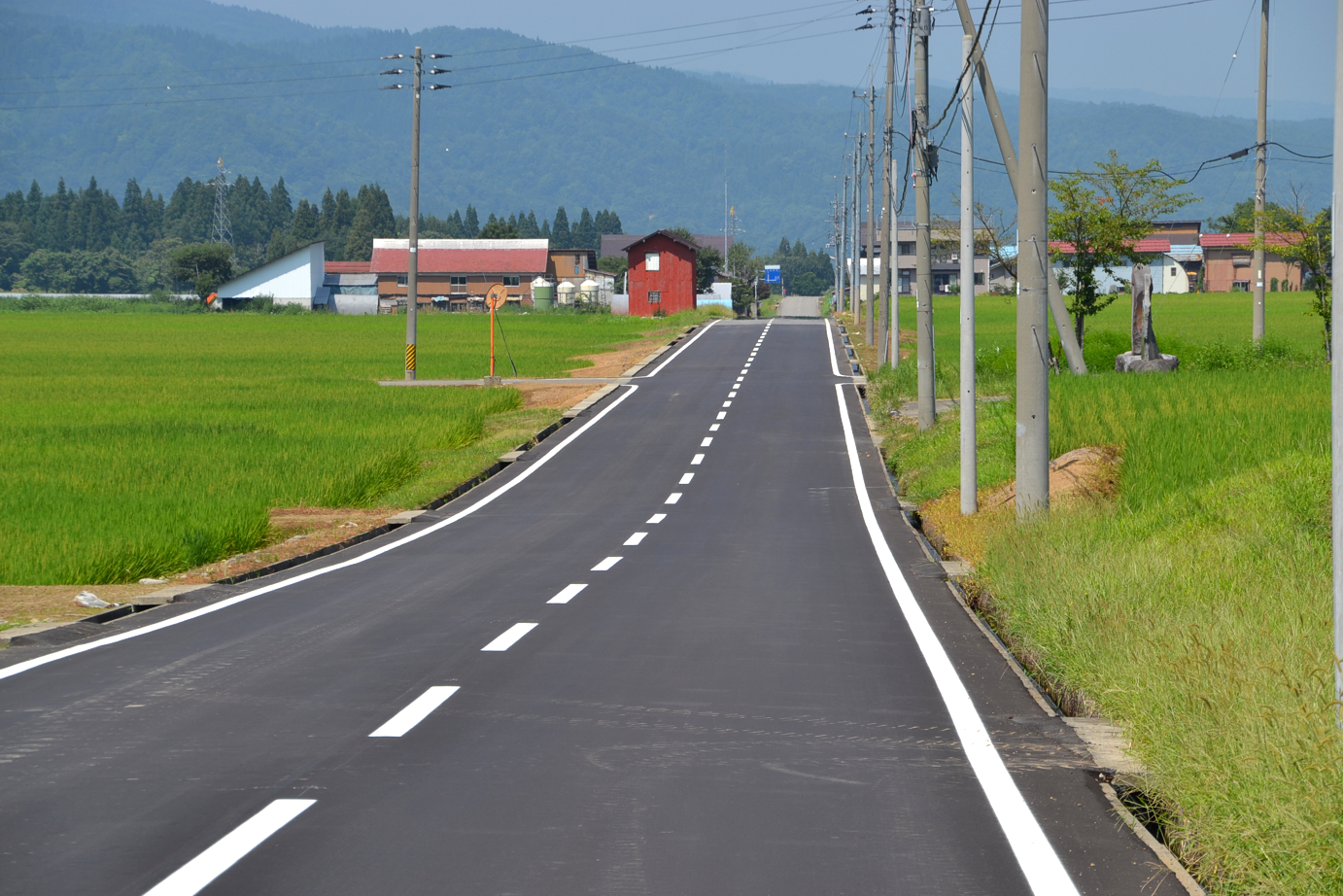
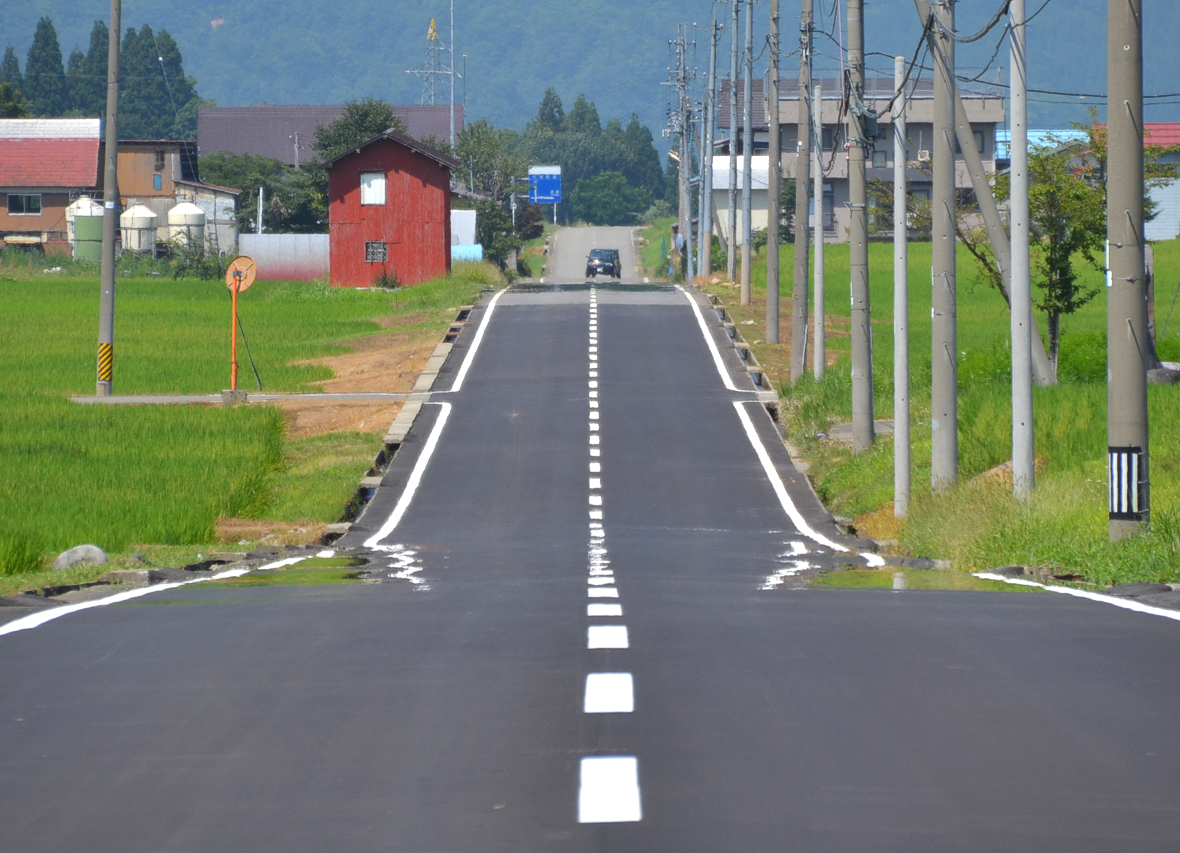
4.1 The middle point: the upper view
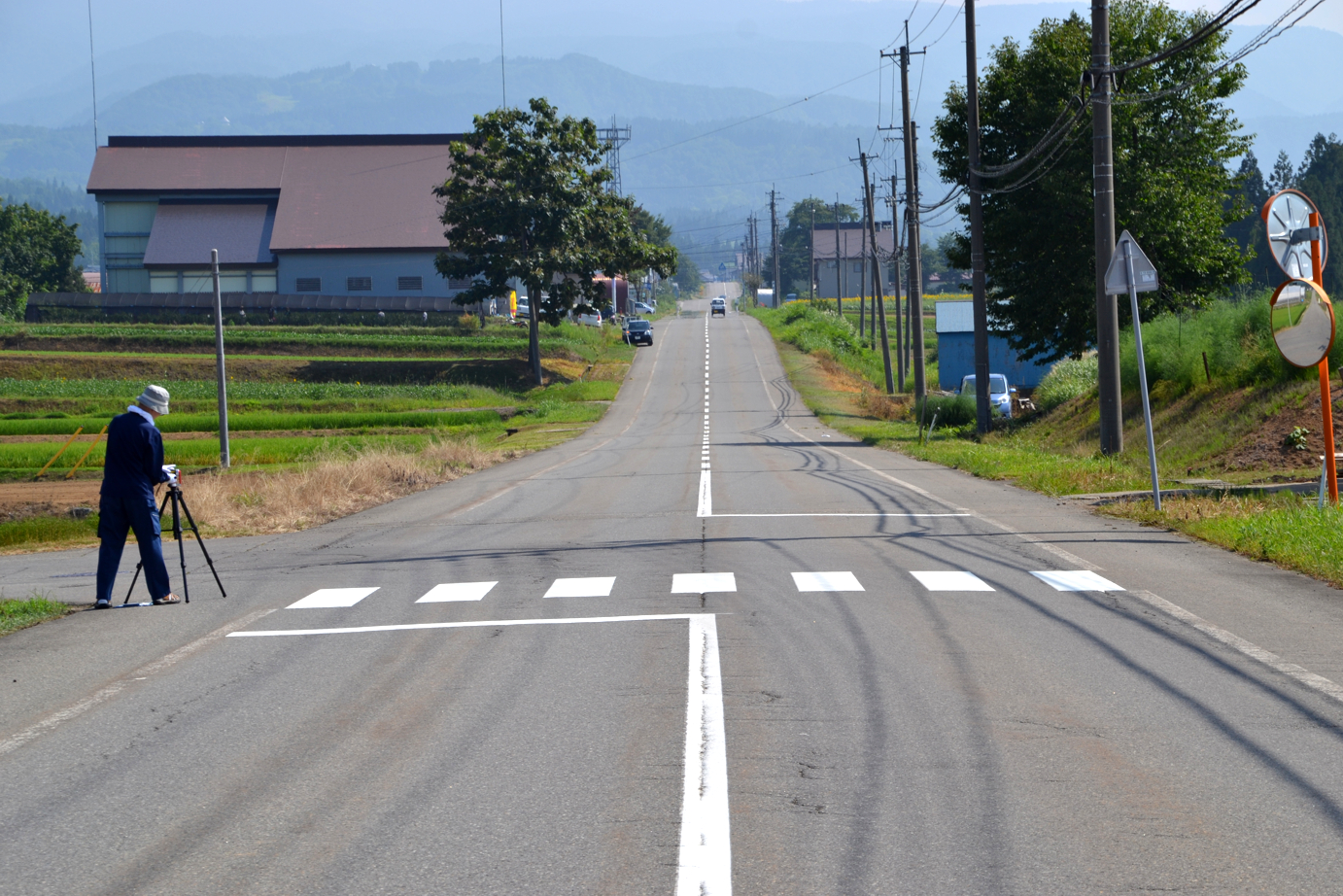
The slope in front of the sag appears to be a descent but it is actually an ascent of 0.9° degee (1.6%). The slope behind the sag is an ascent of 2.9° degee (5.1%).
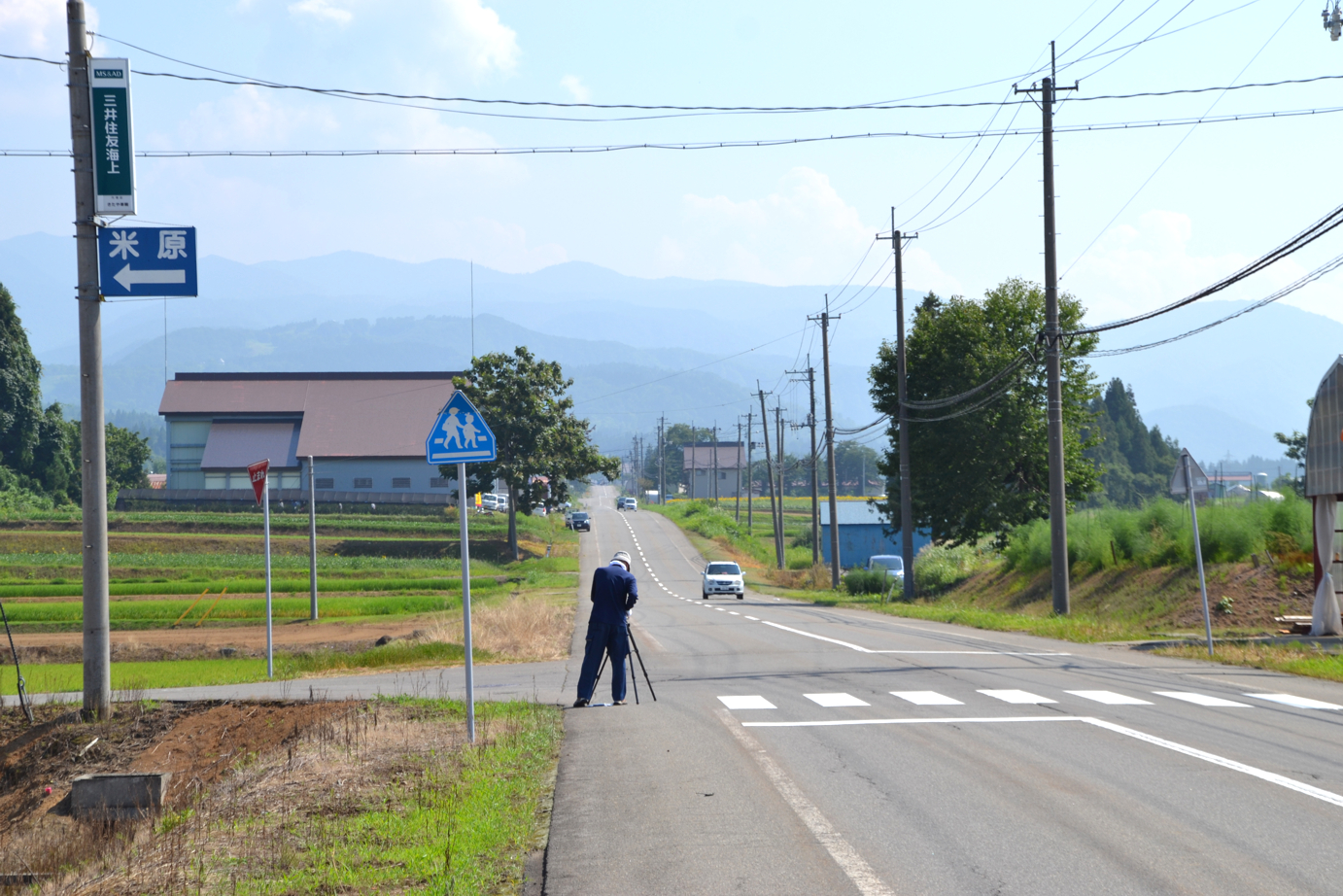
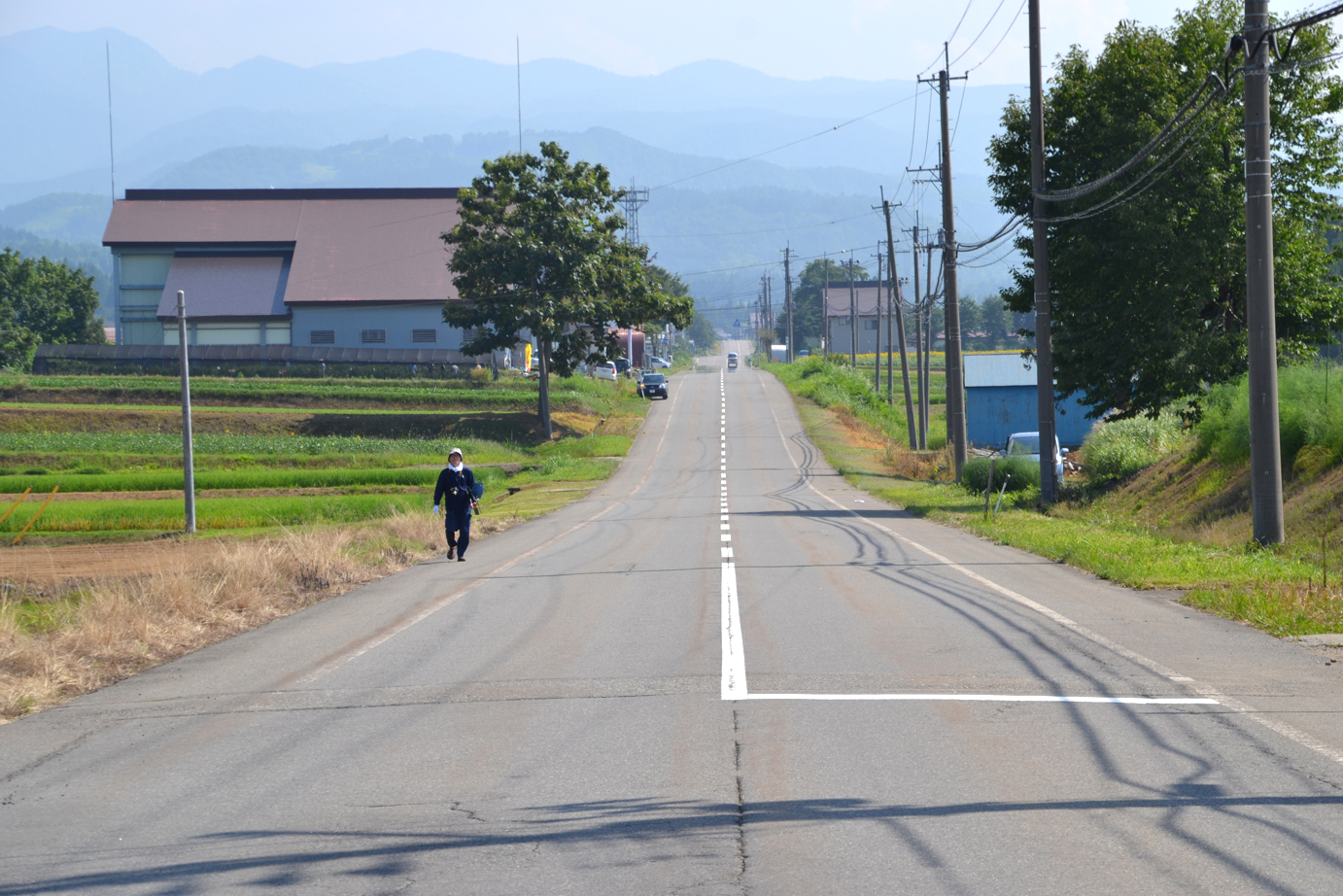
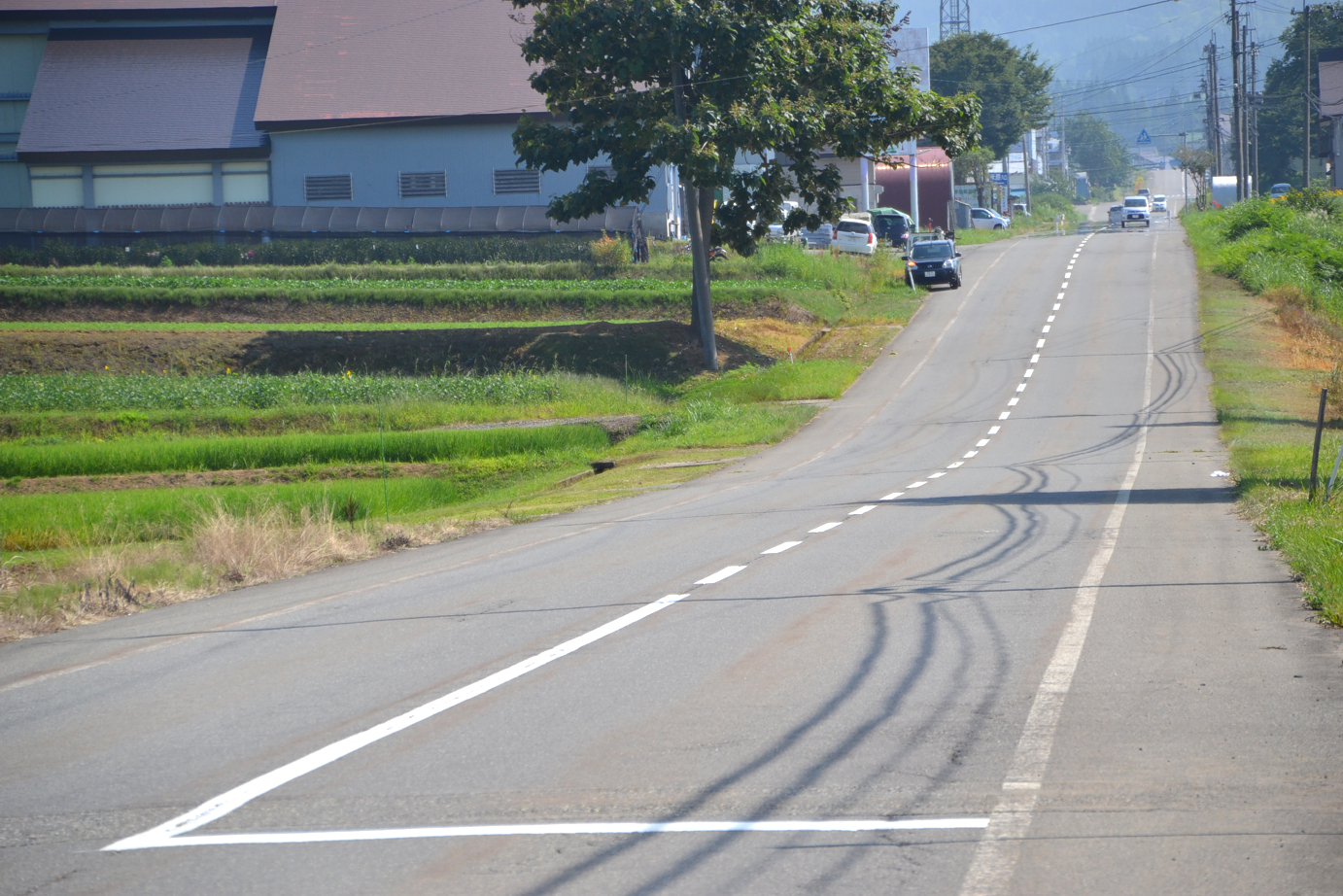
The slope in front of the sag appears to be a descent but it is actually an ascent of 0.9° degee (1.6%). The slope behind the sag is an ascent of 2.9° degee (5.1%).
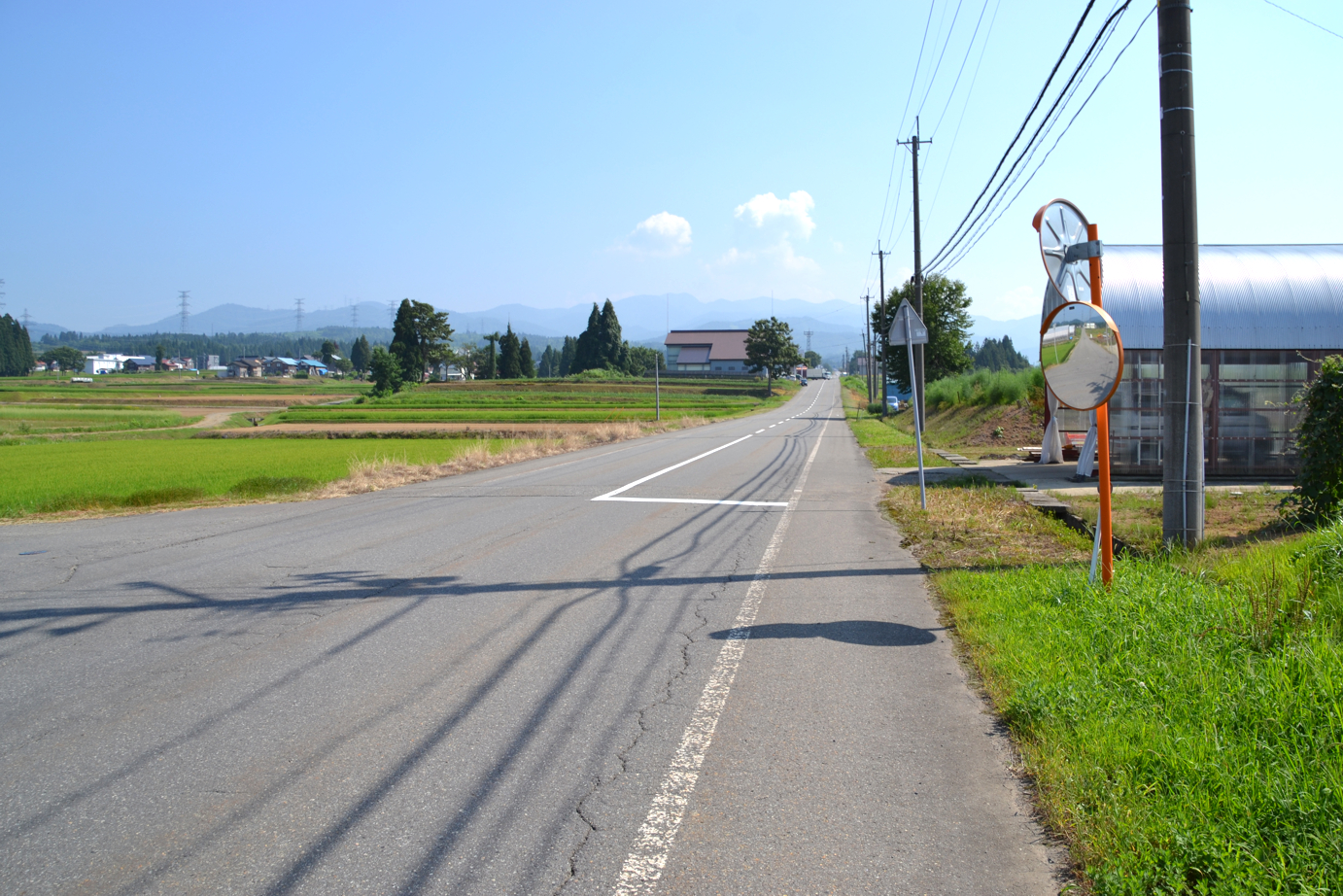
4.2 The middle point: the lower view
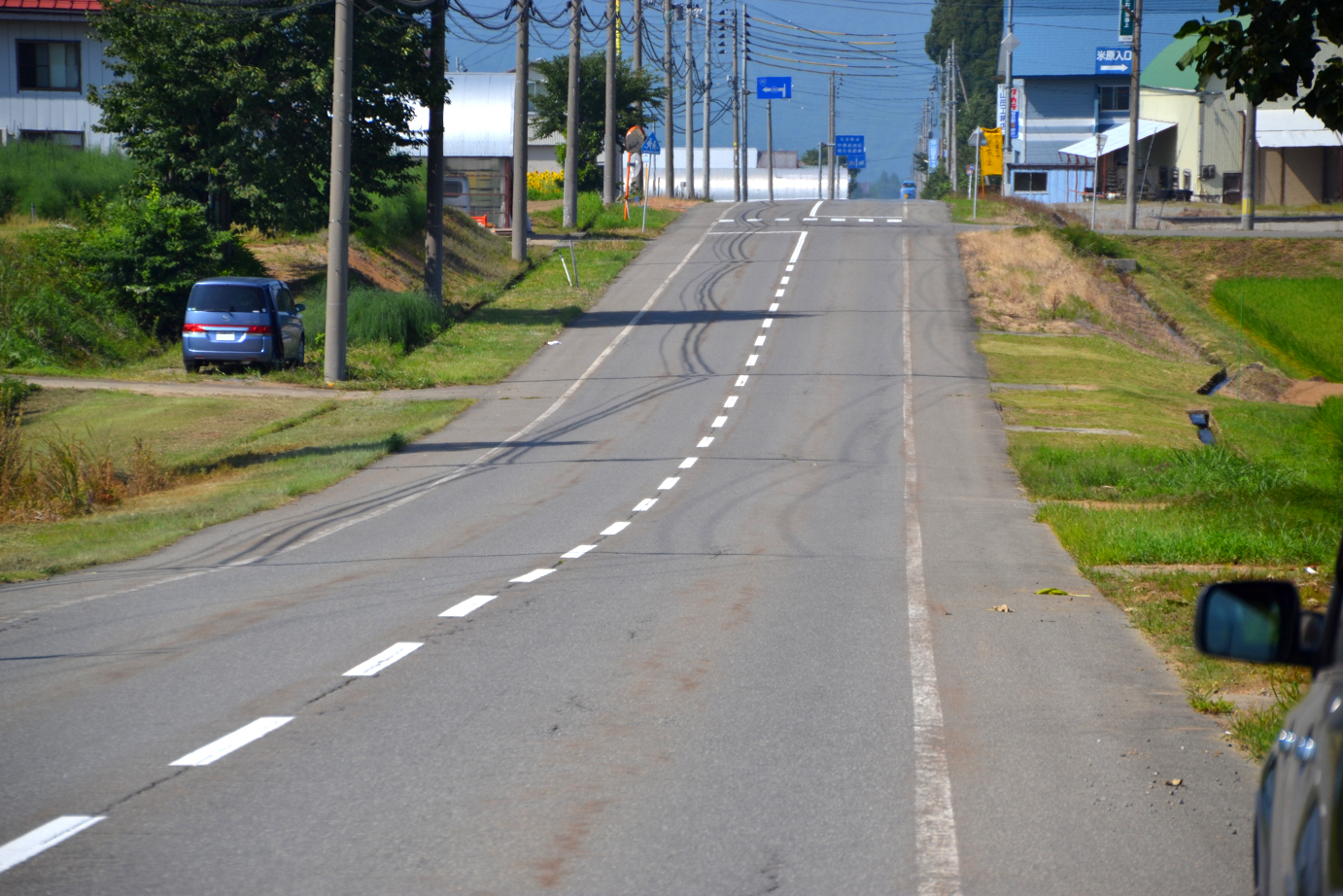
The slope behind the sag appears to be an ascent but it is actually a descent of 0.9° degee (1.6%). The slope in front of the sag is a descent of 2.9° degee (5.1%).
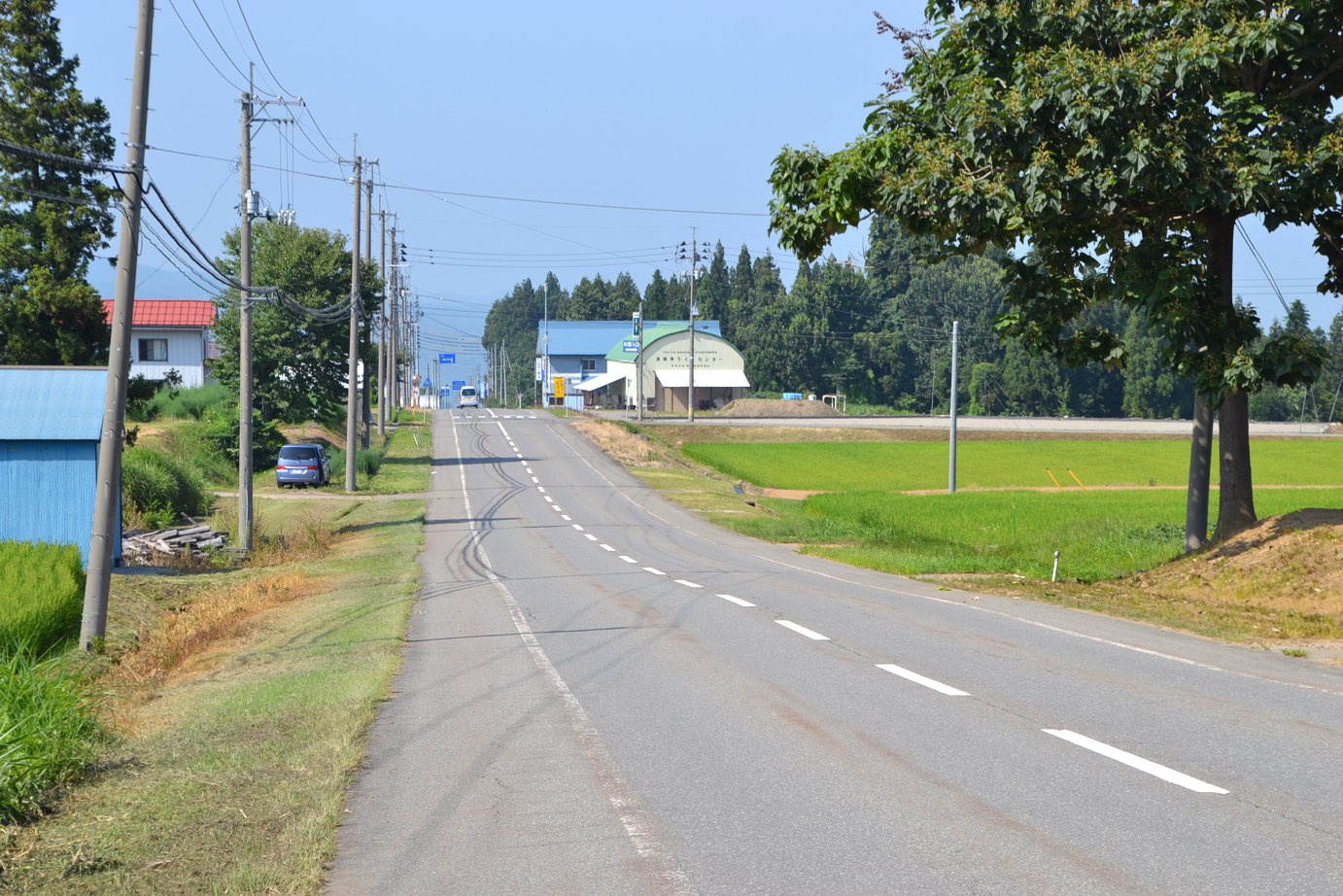
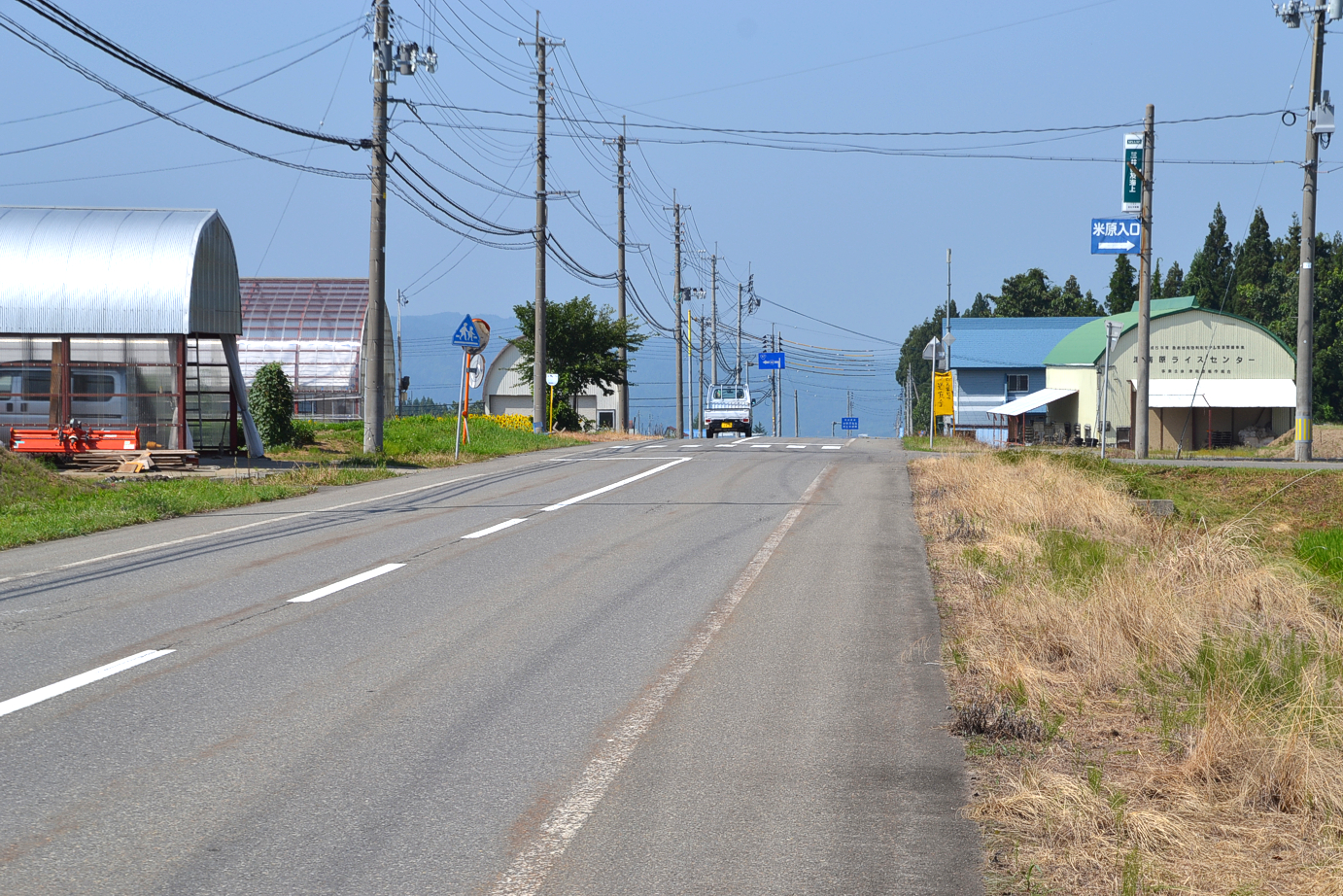
The slope appears to be an ascent but it is actually a descent of 0.9° degee (1.6%).
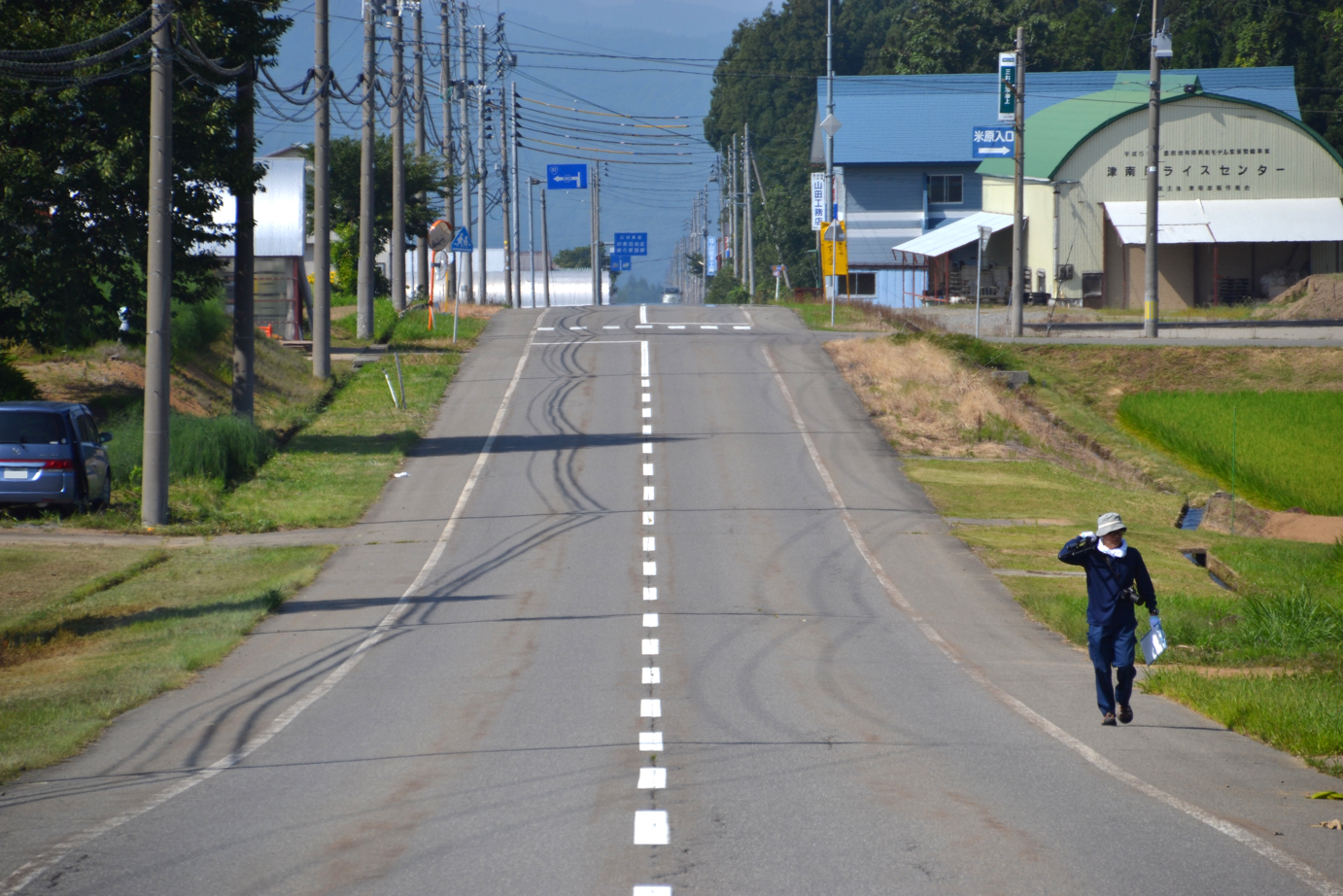
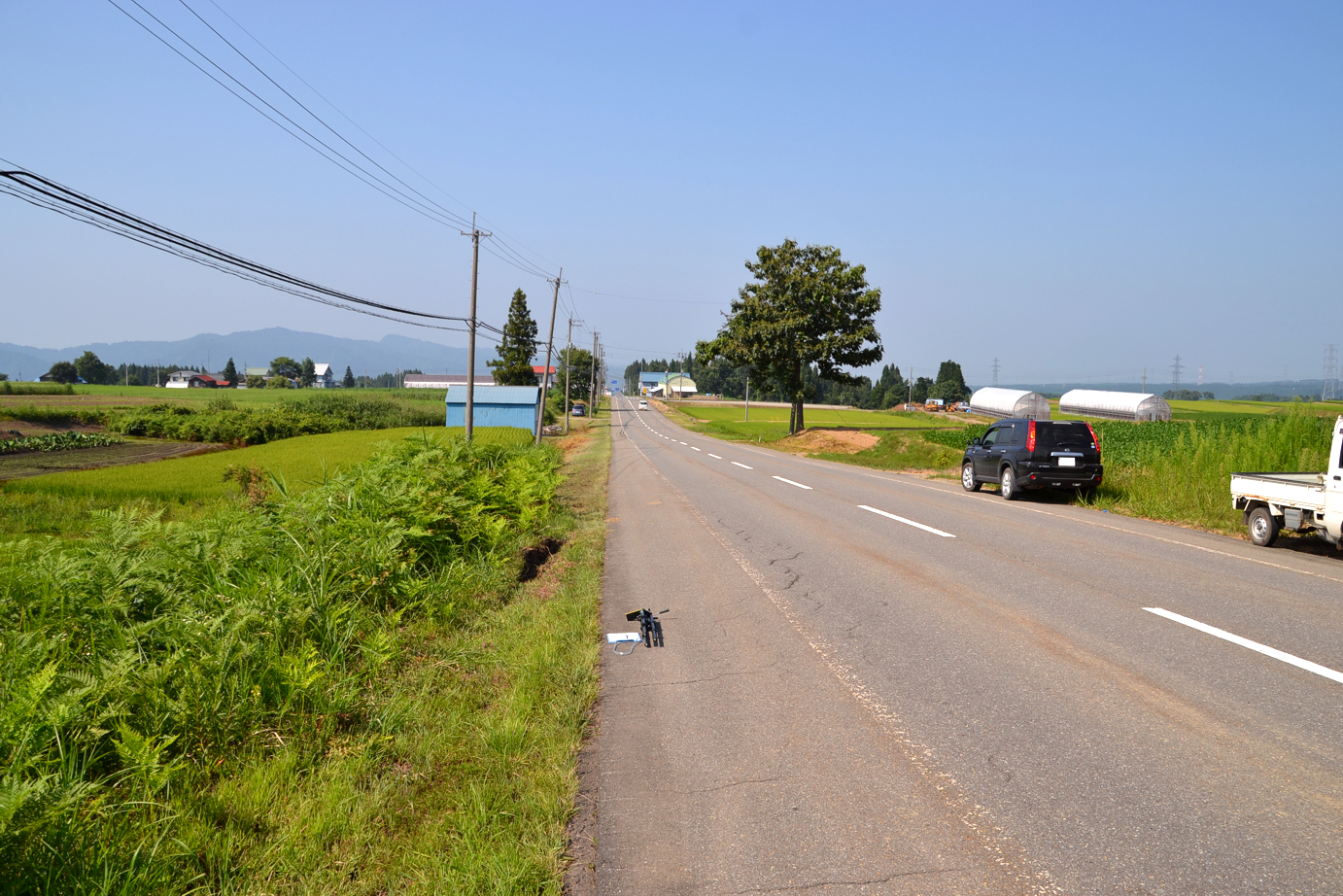
These are all descents.
5.1 The third point from the uppermost one: the upper view
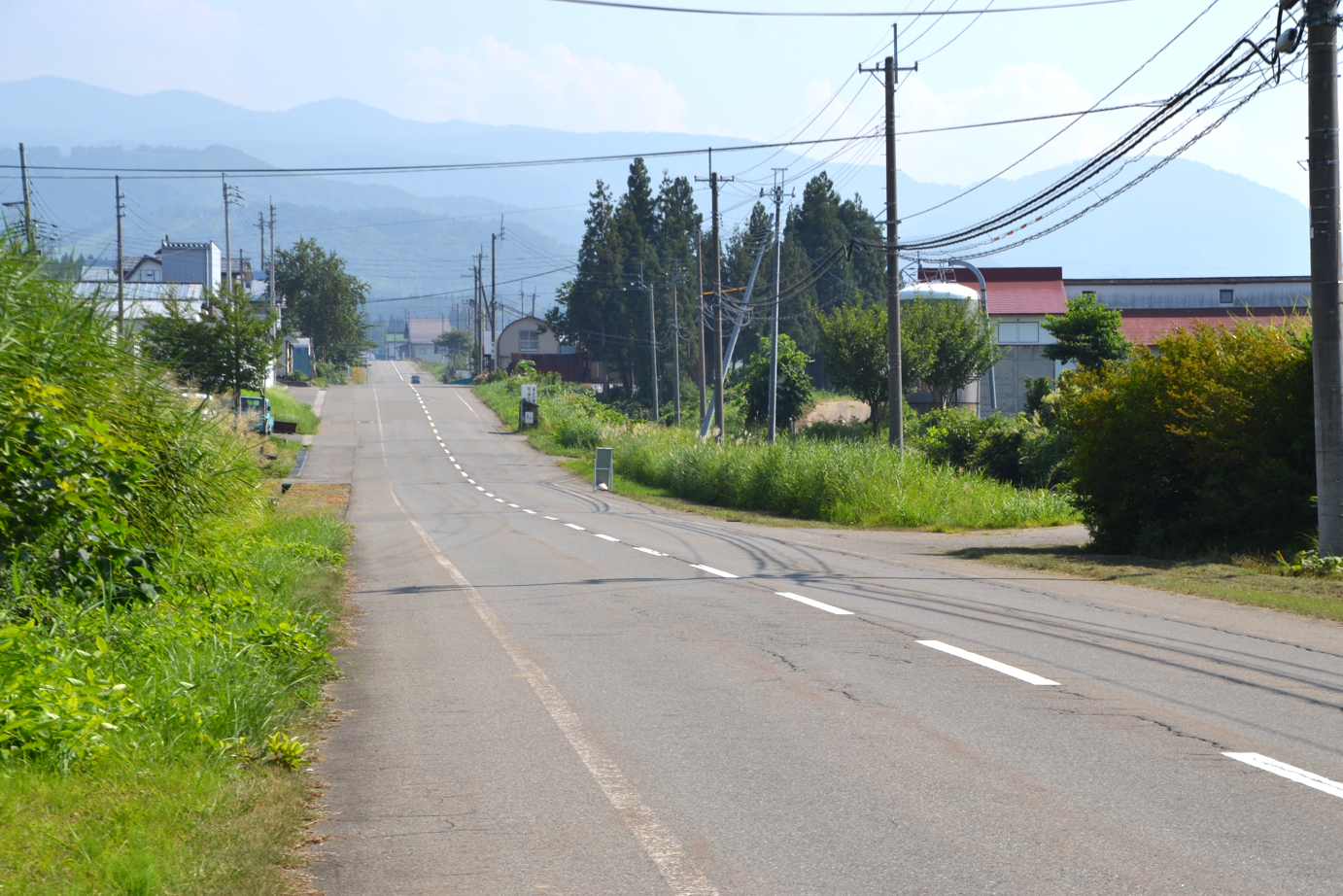
The slope in front of the sag appears to be a descent but it is actually an ascent of 1.5° degee (2.6%). The slope behind the sag is an ascent of 2.5° degee (4.4%).
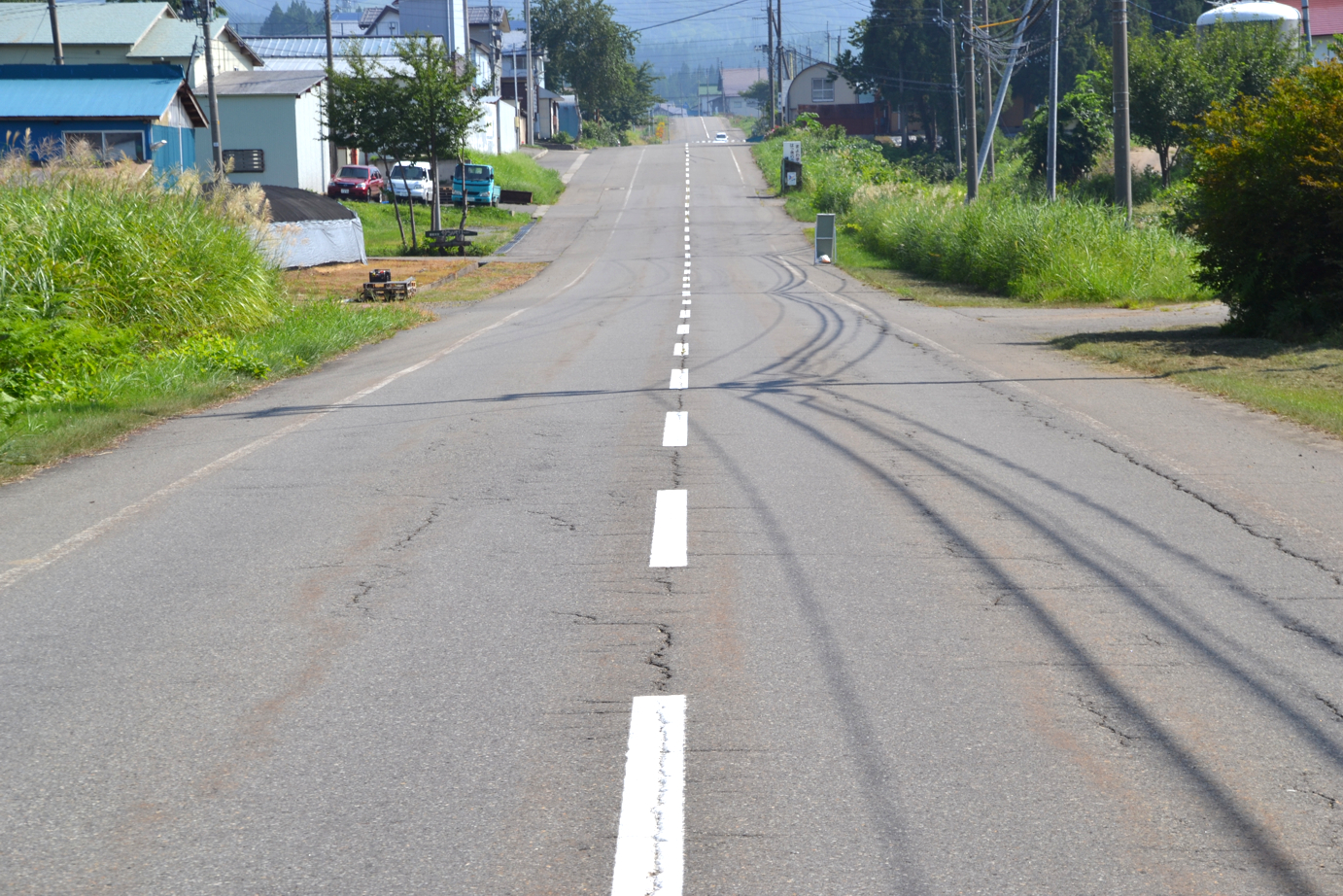
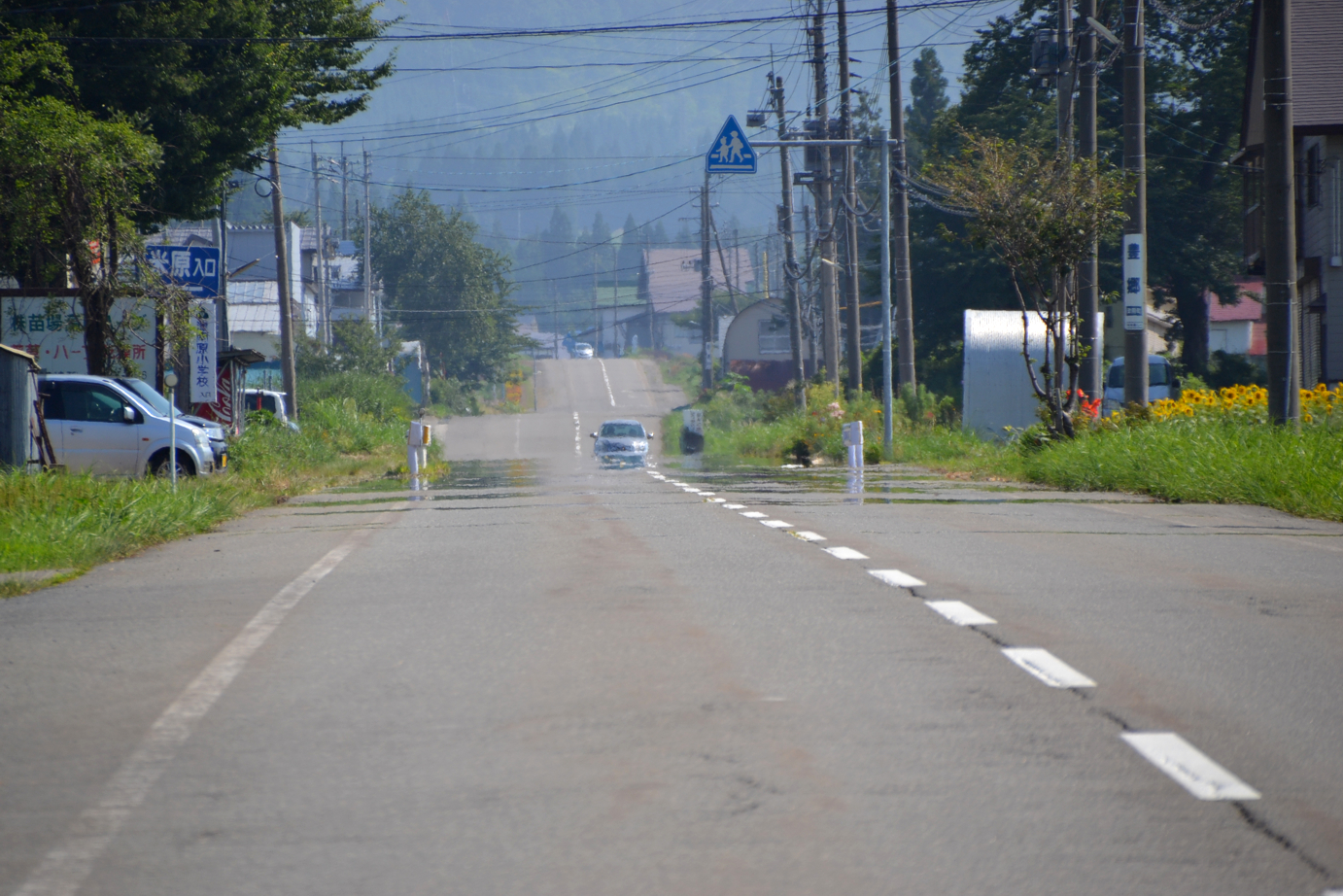
The slope behind the mirage appears to be a descent but it is actually an ascent of 1.5° degee (2.6%).
5.2 The third point from the uppermost one: the lower view
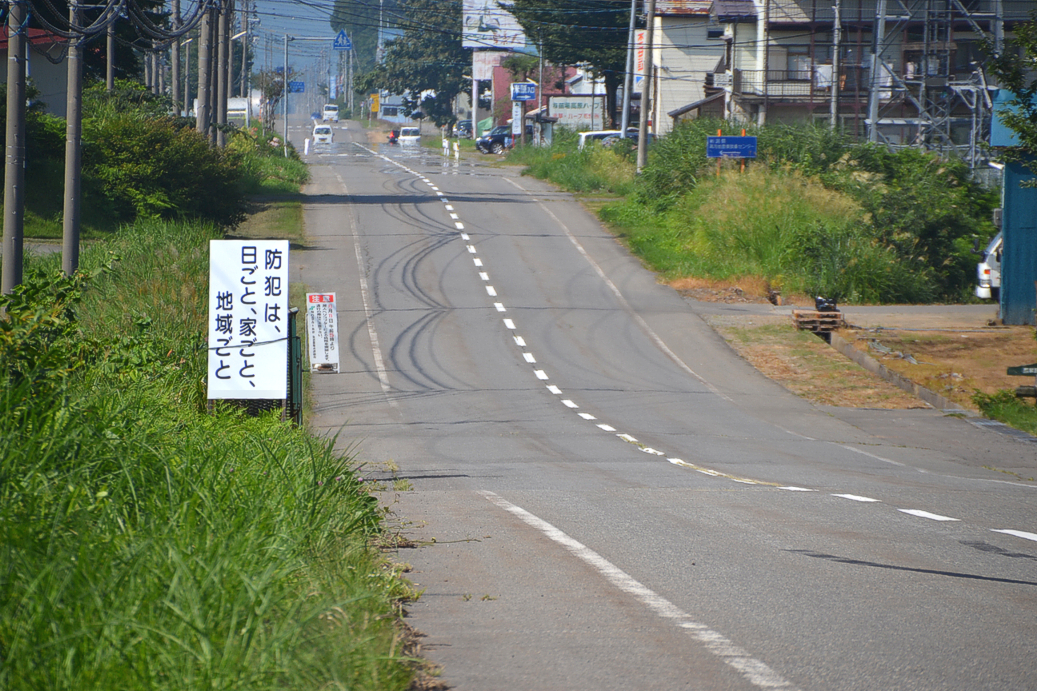
The slope behind the sag appears to be an ascent but it is actually a descent of 1.5° degee (2.6%). The slope in front of the sag is an ascent of 2.5° degee (4.4%).
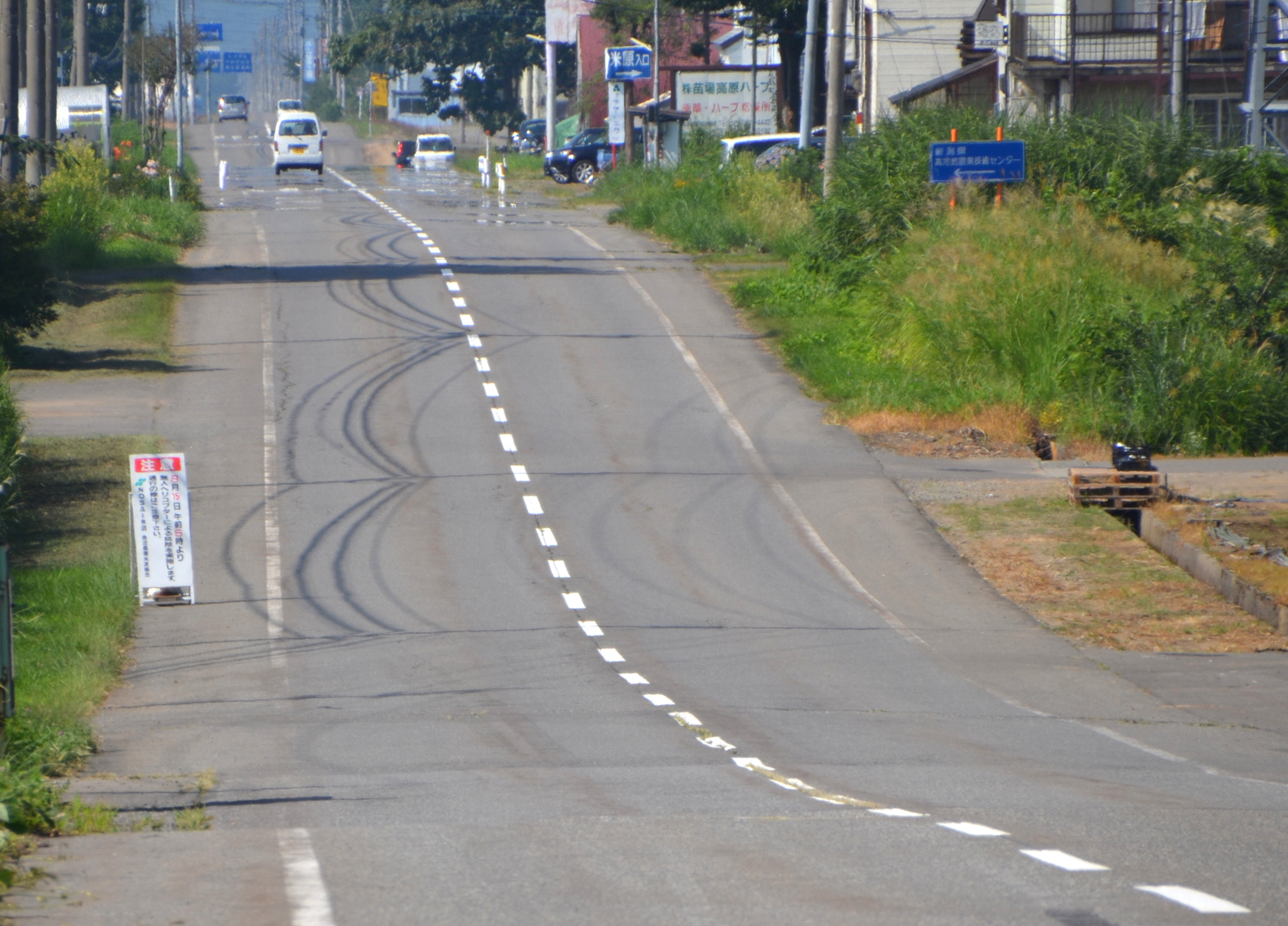
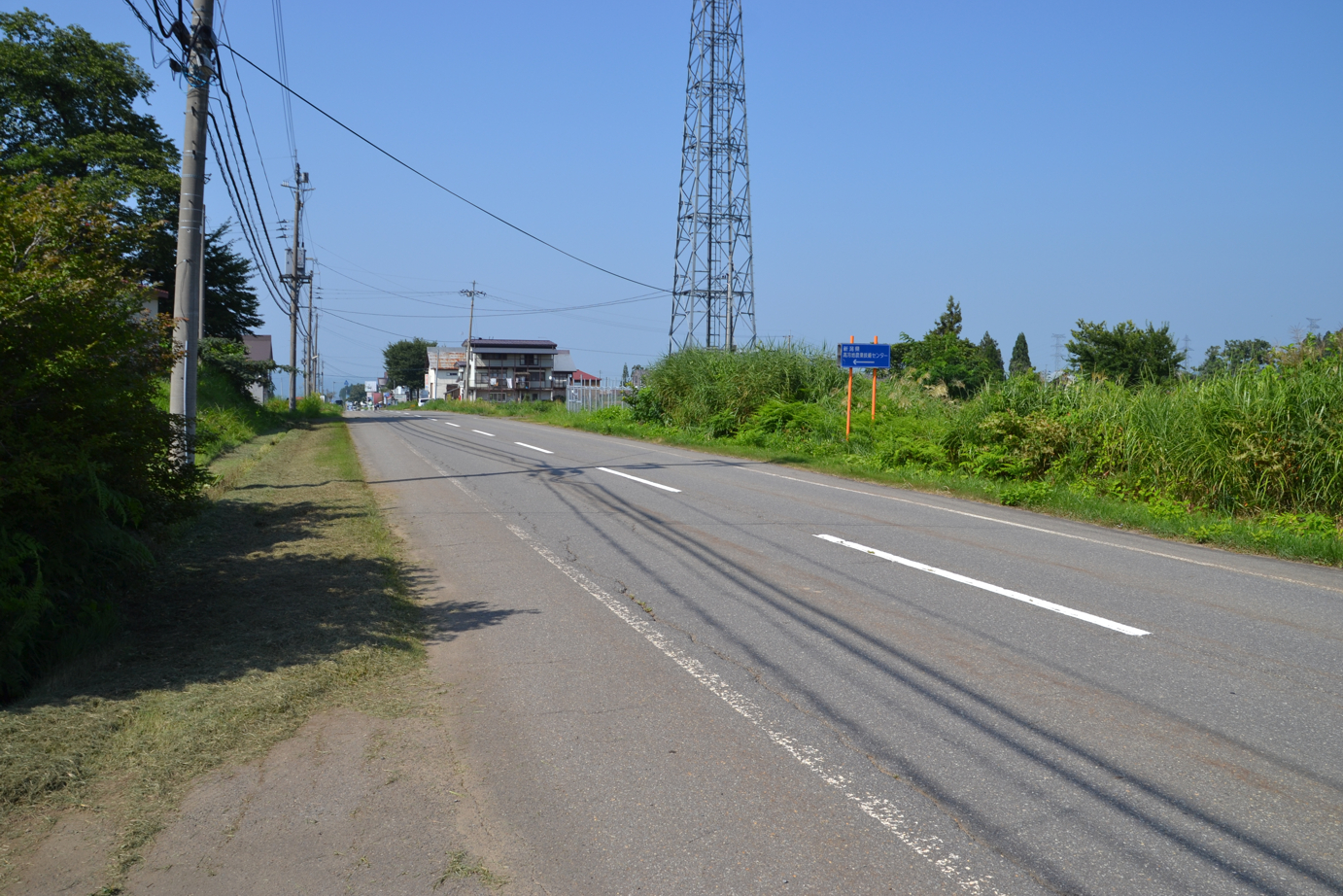
The slope appears to be an ascent but it is actually a descent of 1.5° degee (2.6%).
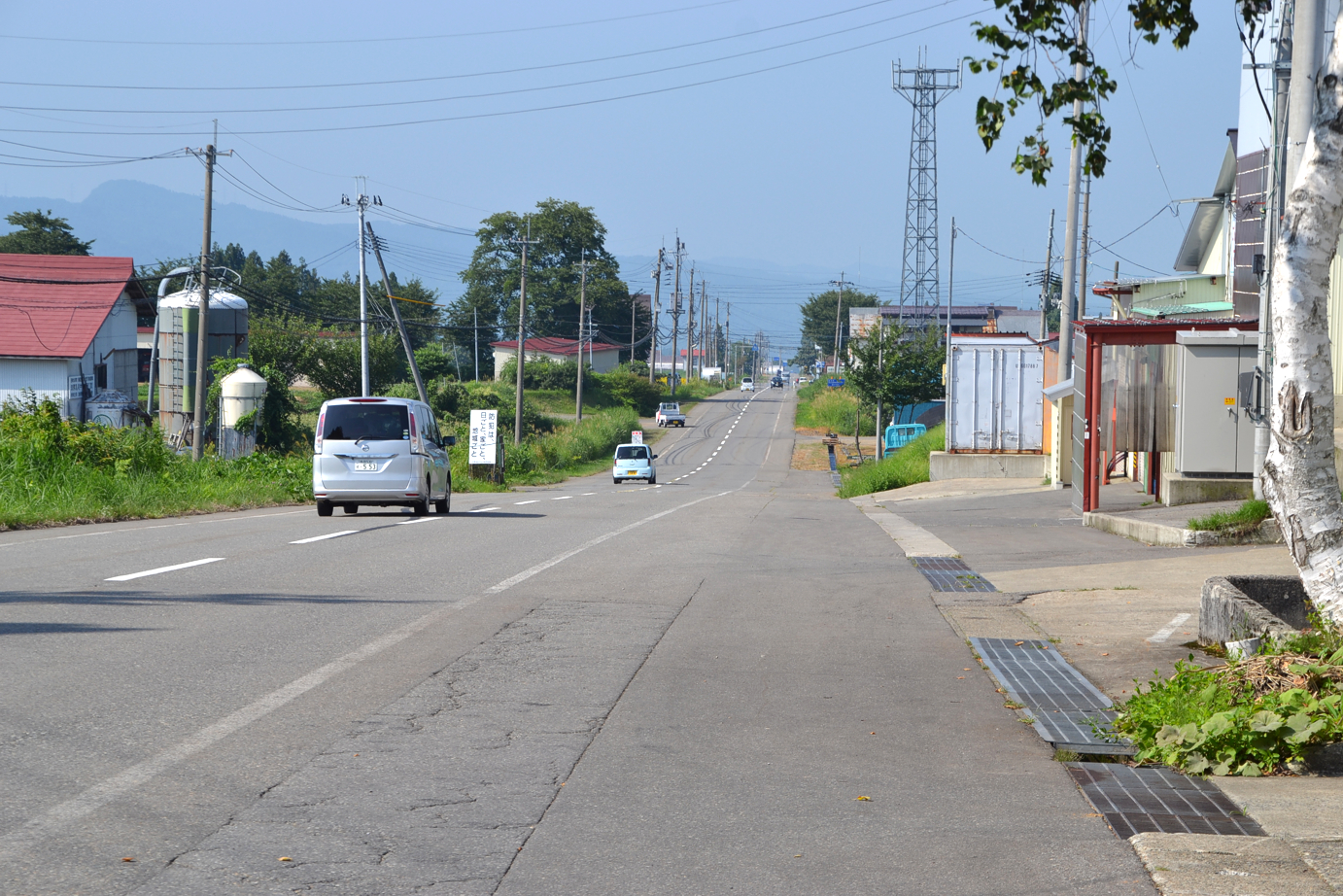
The slope behind the sag appears to be a descent but it is actually an ascent of 1.5° degee (2.6%). The slope in front of the sag is an ascent of 2.5° degee (4.4%).
6.1 The second uppermost point: the upper view
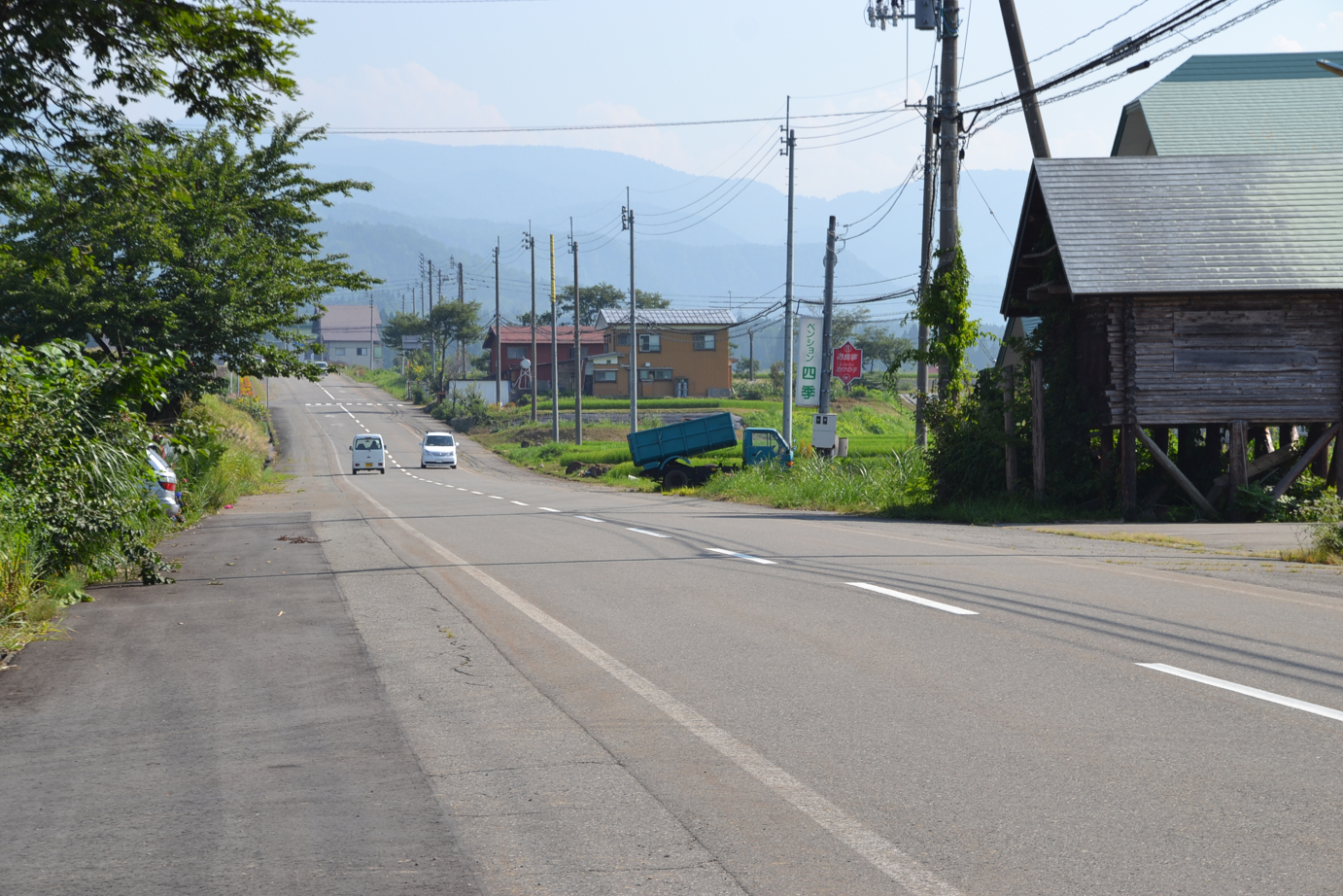
The slope in front of the sag appears to be a descent but it is actually an ascent of 1.1° degee (1.9%). The slope behind the sag is an ascent of 2.7° degee (4.7%).
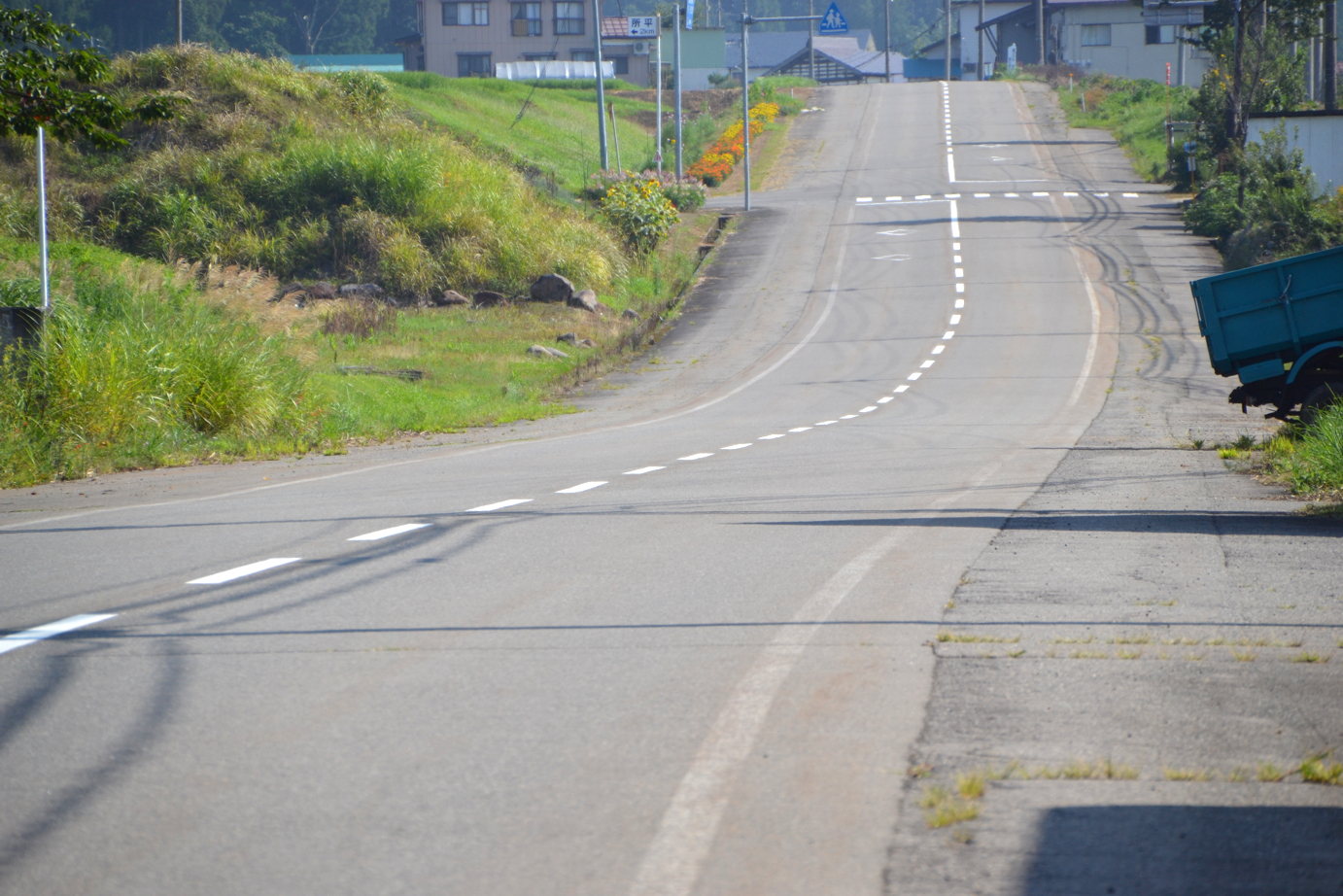
6.2 The second uppermost point: the lower view
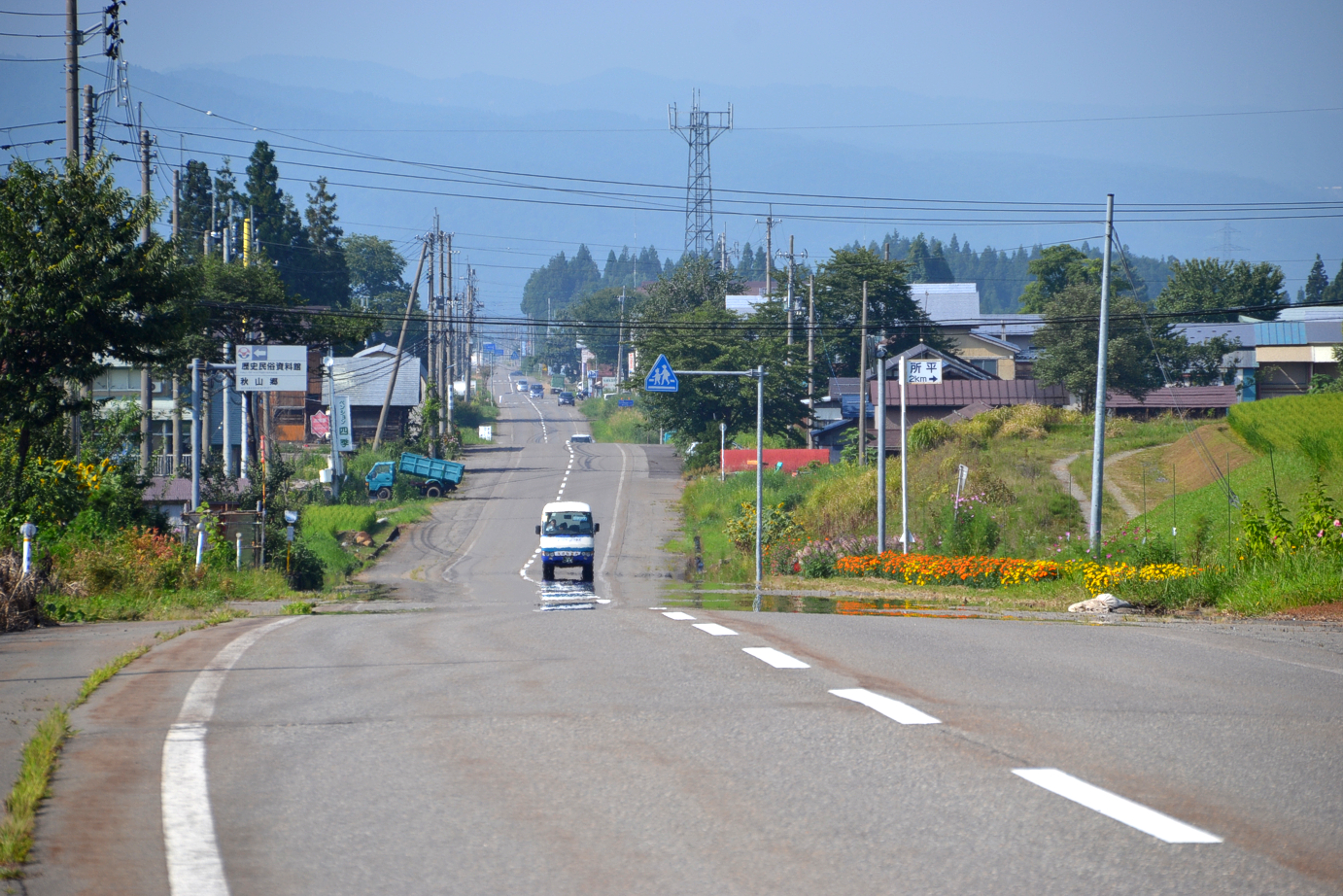
The slope behind the sag appears to be an ascent but it is actually a descent of 1.1° degee (1.9%). The slope in front of the sag (where a mirage is viewed) is an ascent of 2.7° degee (4.7%).
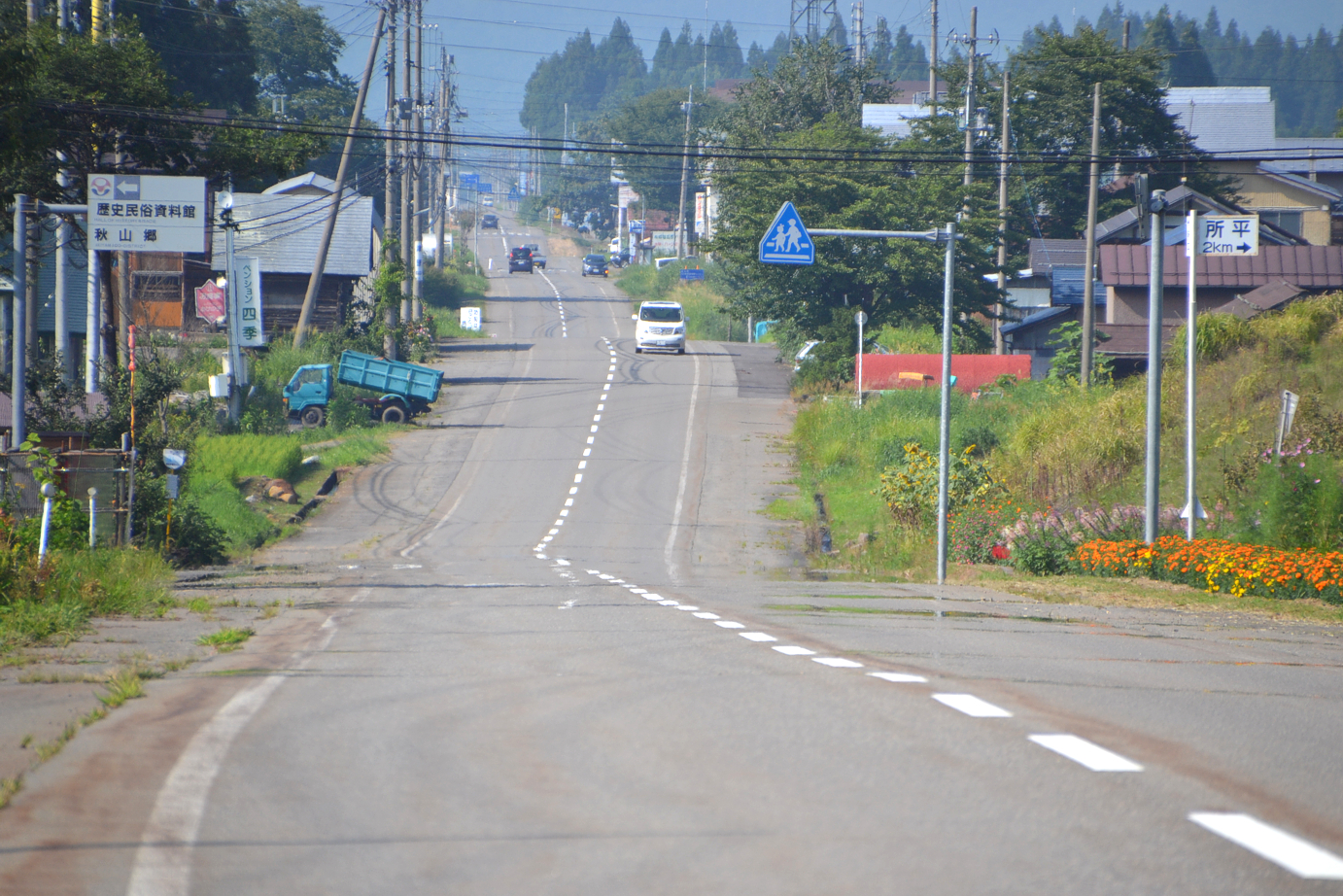
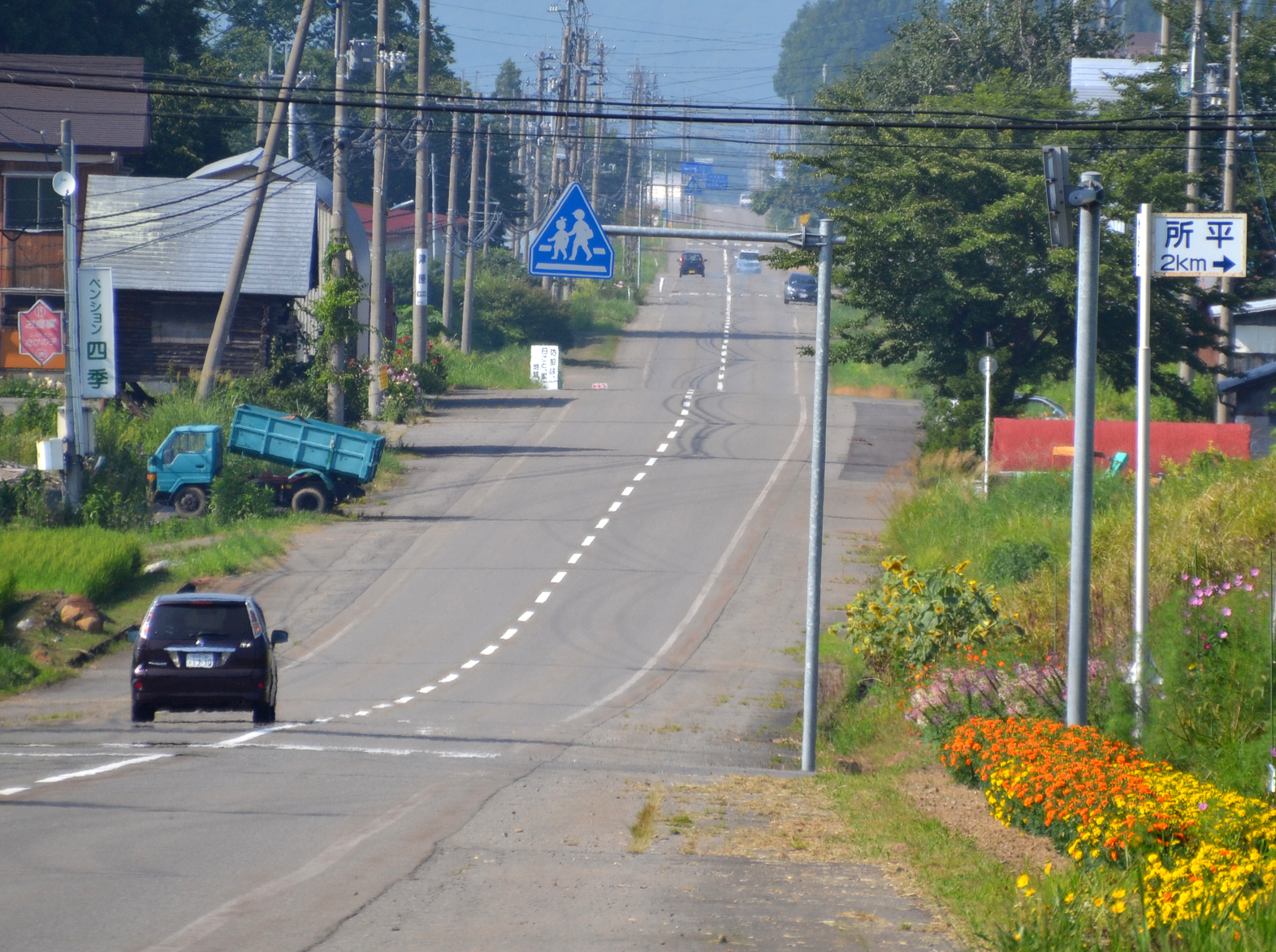
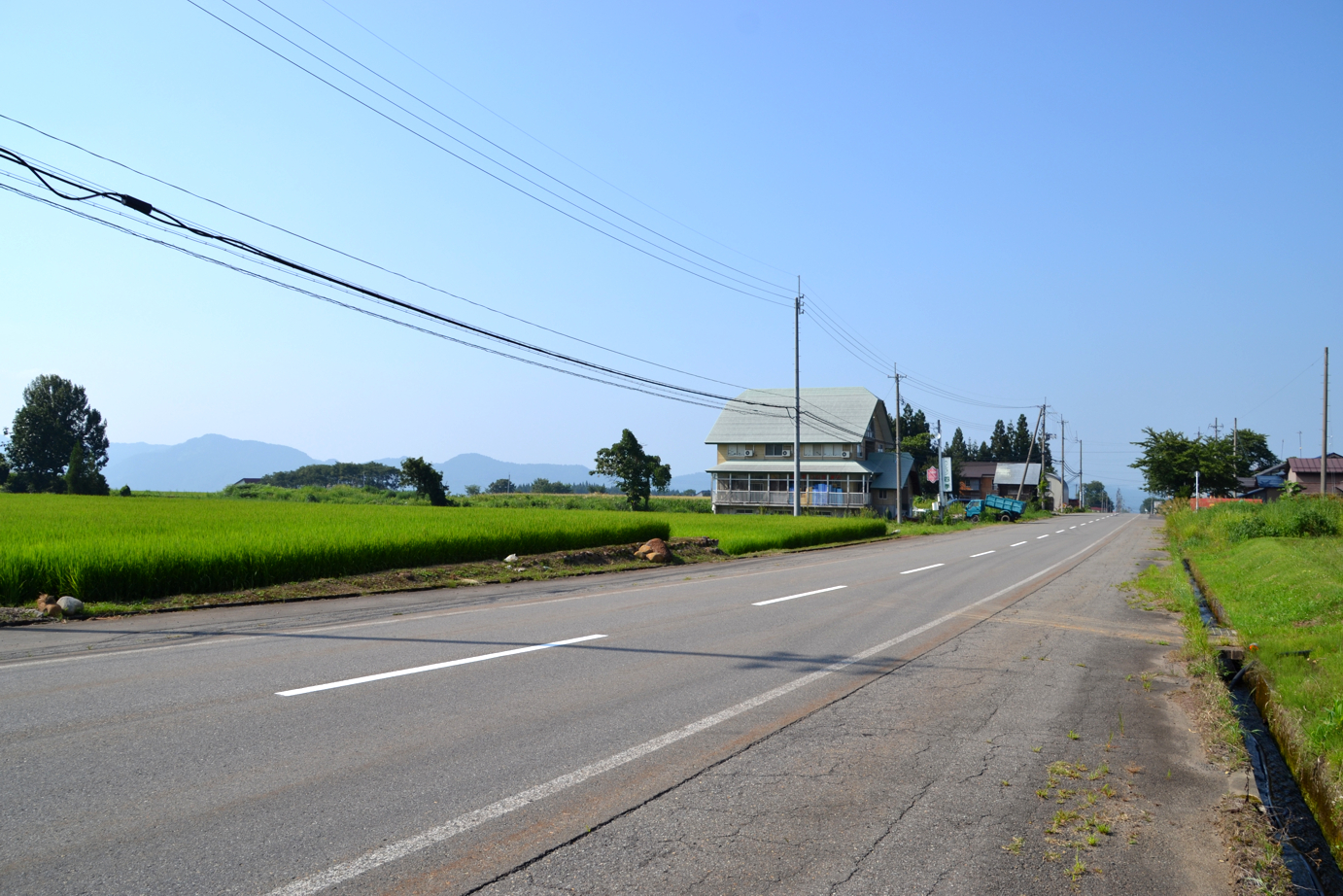
The slope appears to be an ascent but it is actually a descent of 1.1° degee (1.9%).
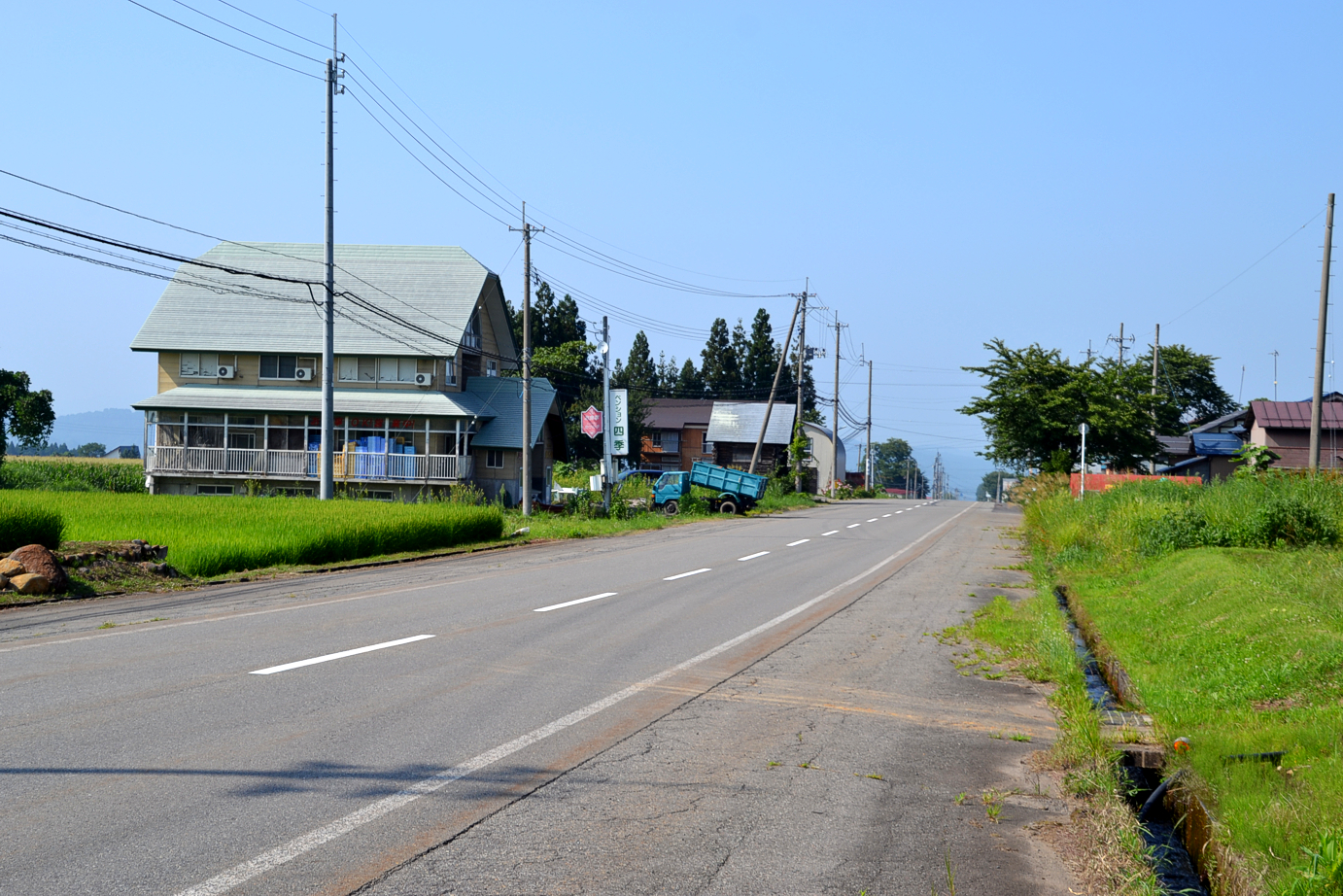
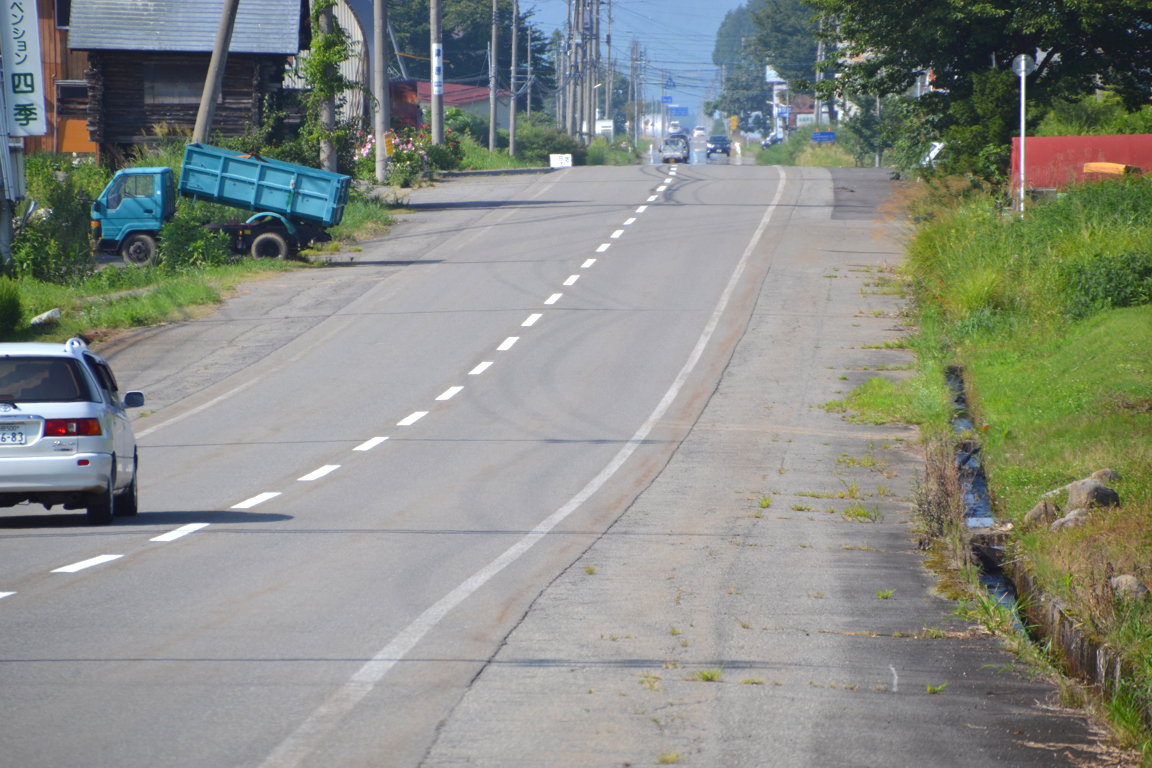
7.1 The uppermost point: the upper view
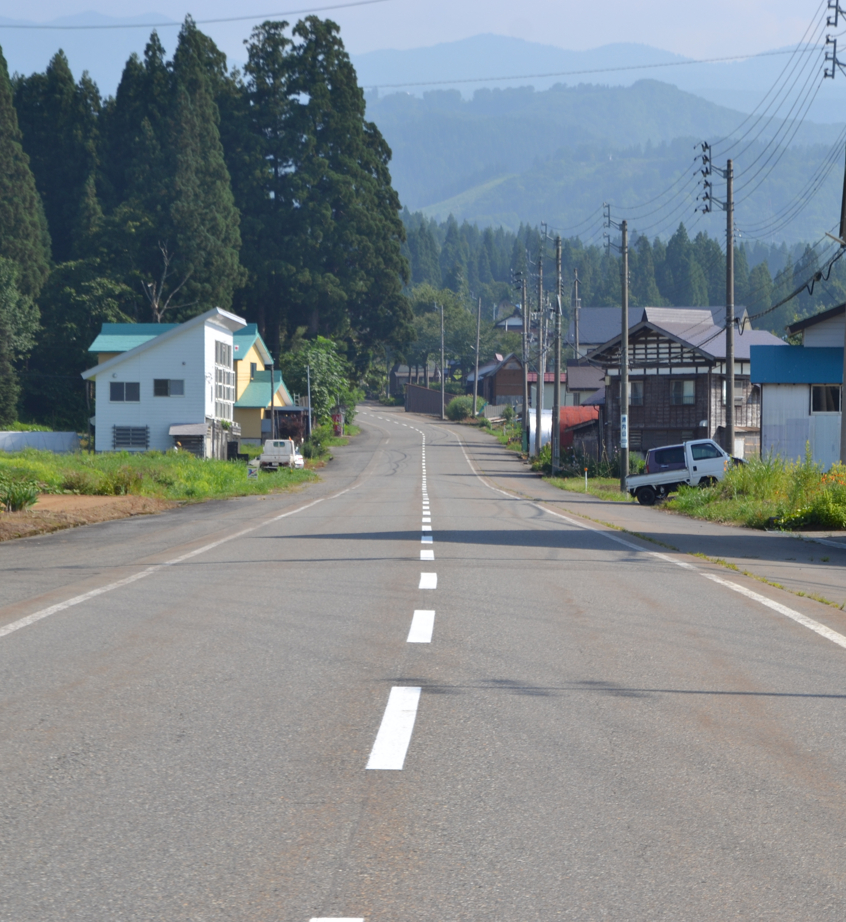
The slope in front of the sag appears to be a descent but it is actually an ascent of 0.6° degee (1.0%). The slope behind the sag is an ascent of 2.1° degee (3.7%).
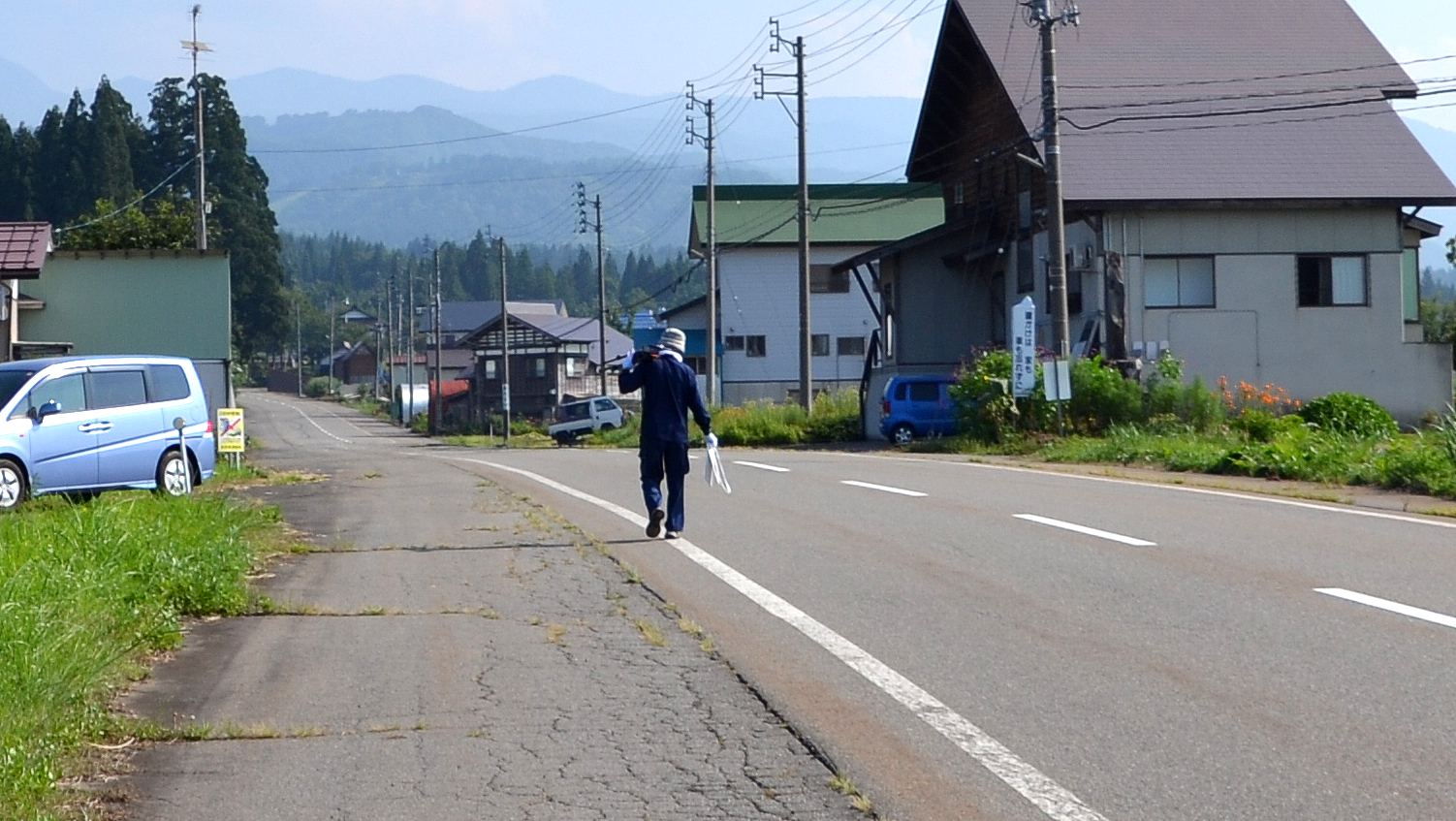
7.2 The uppermost point: the lower view
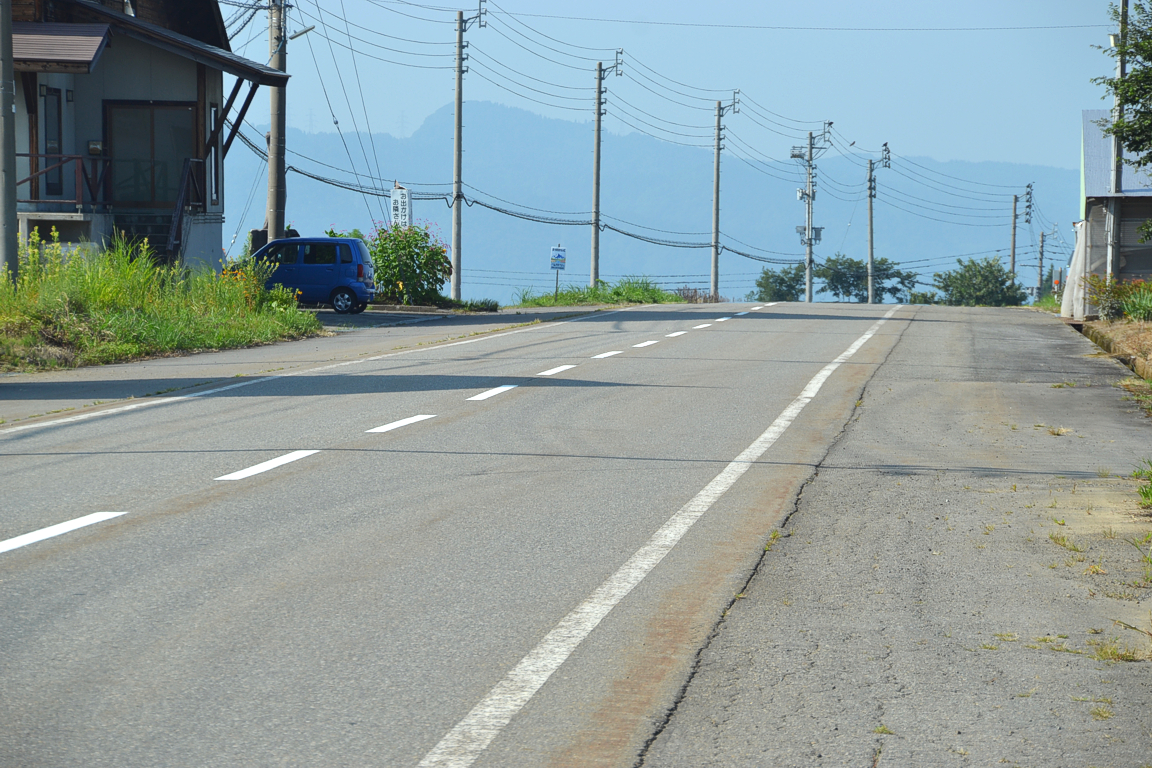
The slope appears to be an ascent but it is actually a descent of 0.6° degee (1.0%).
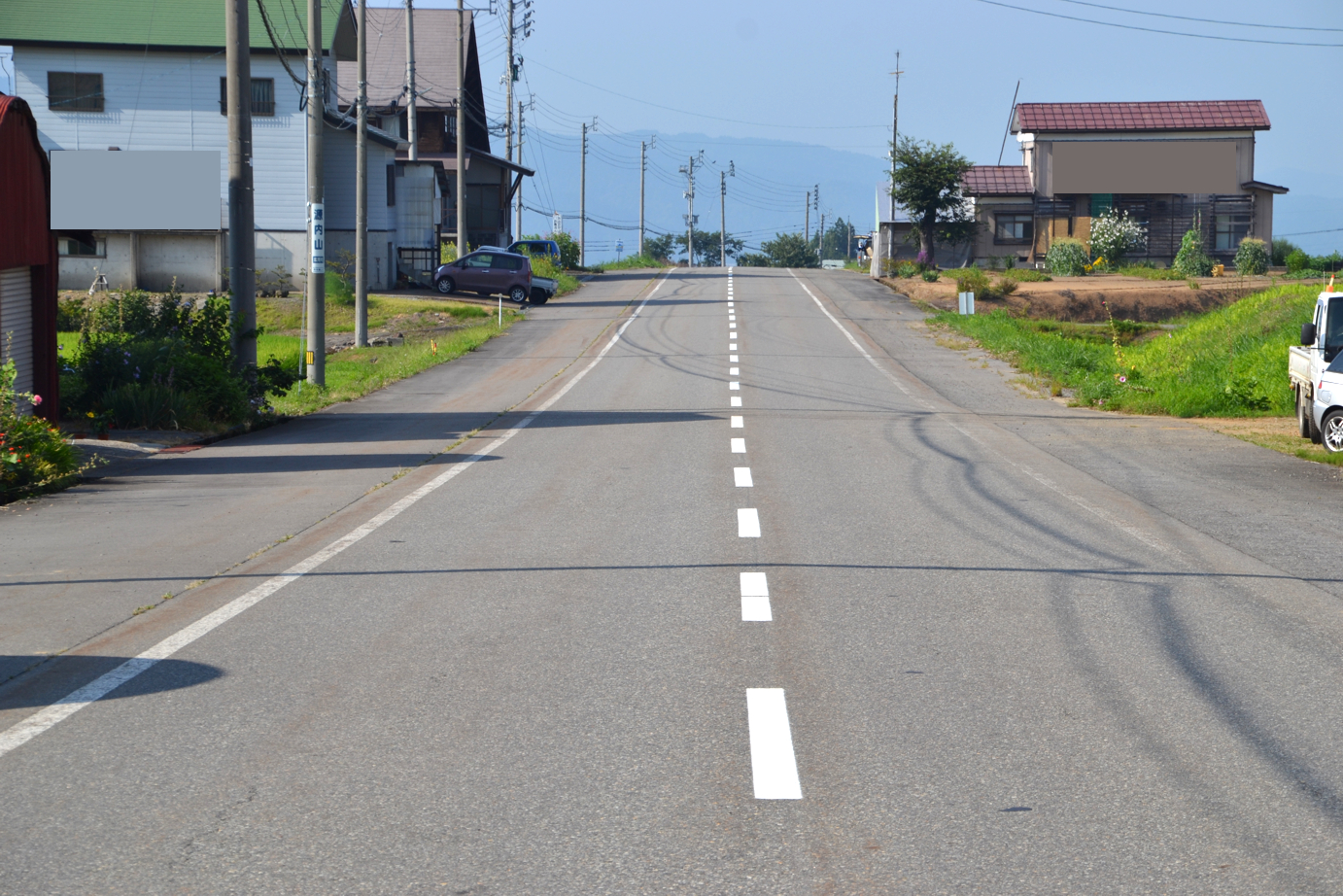
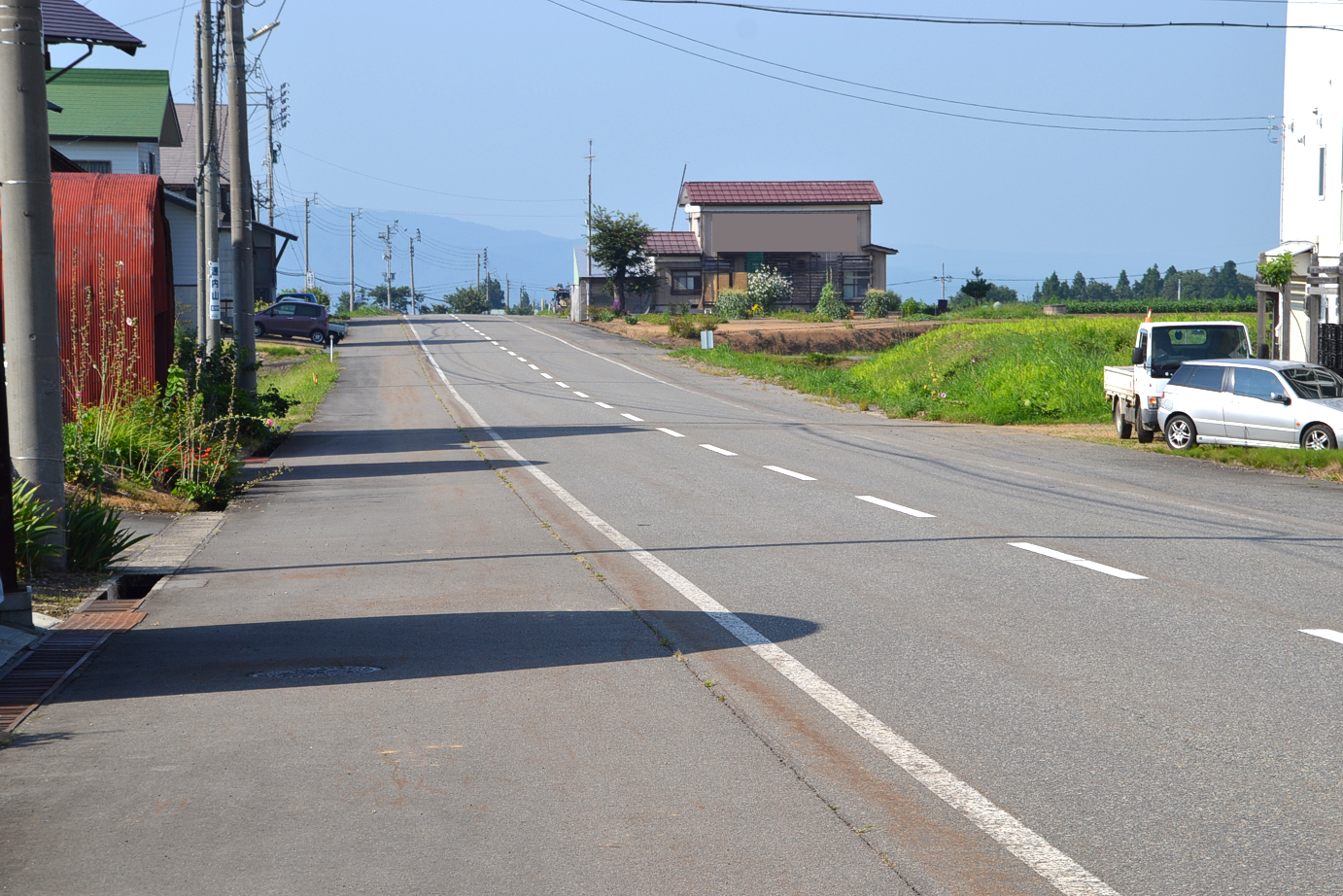
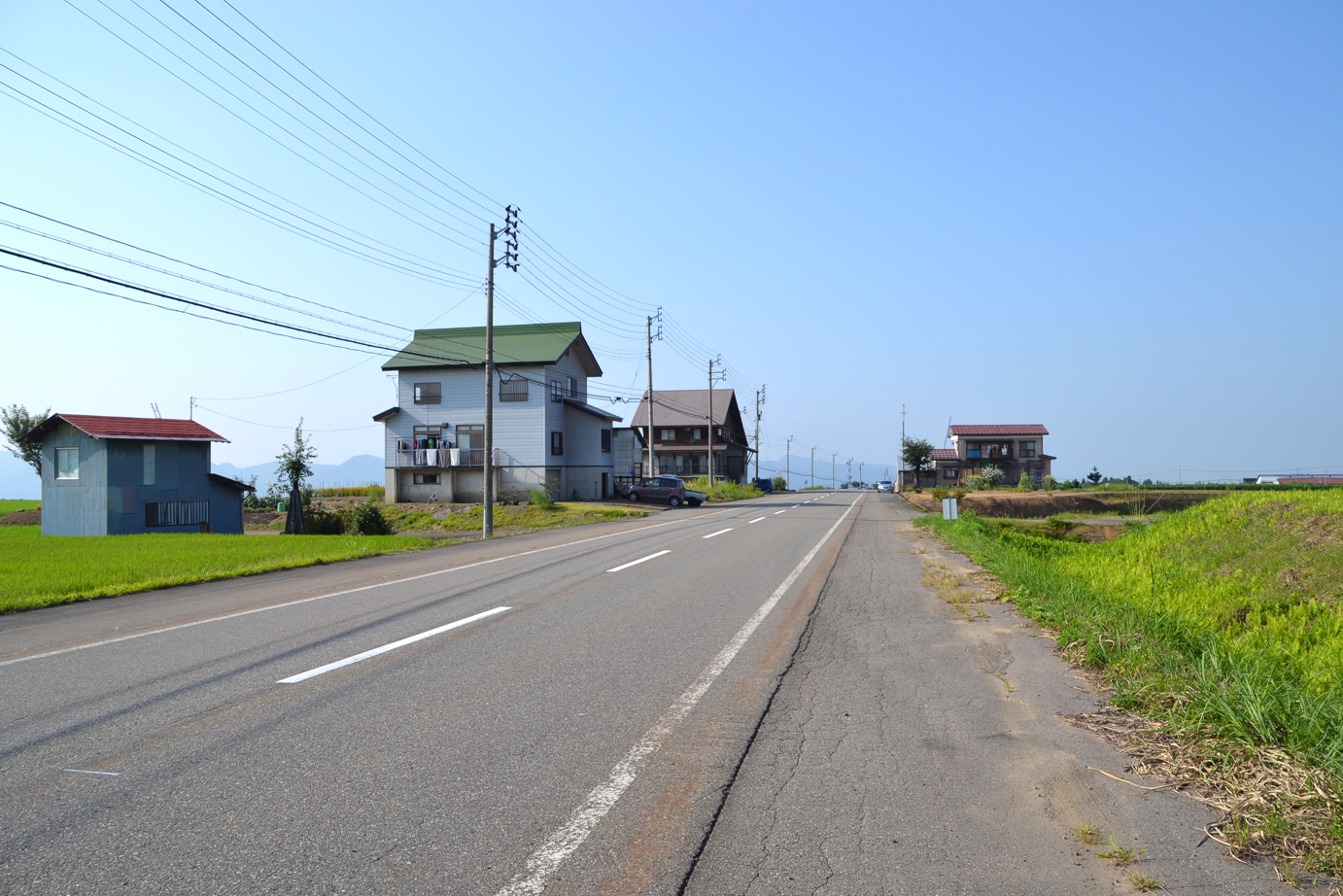
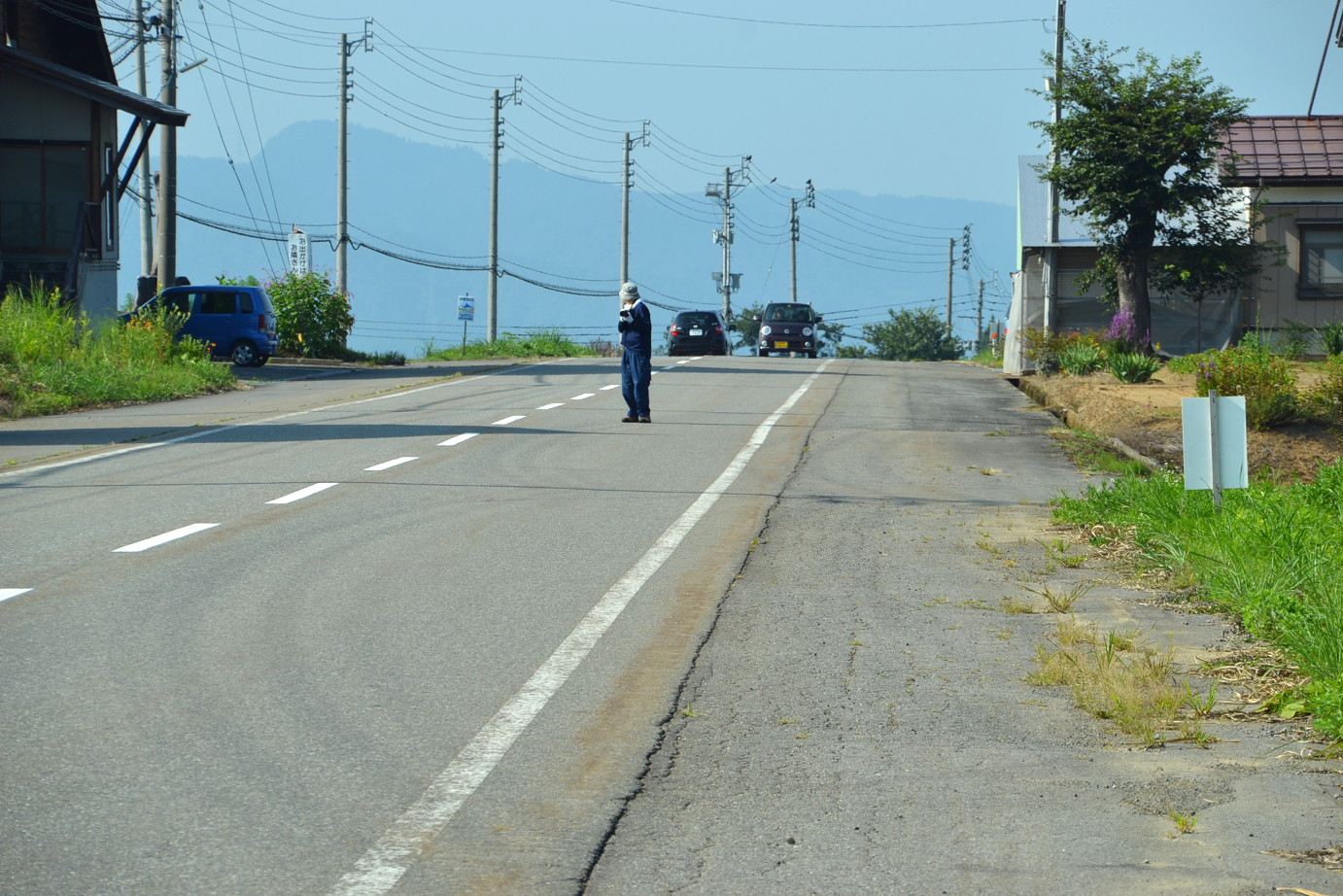
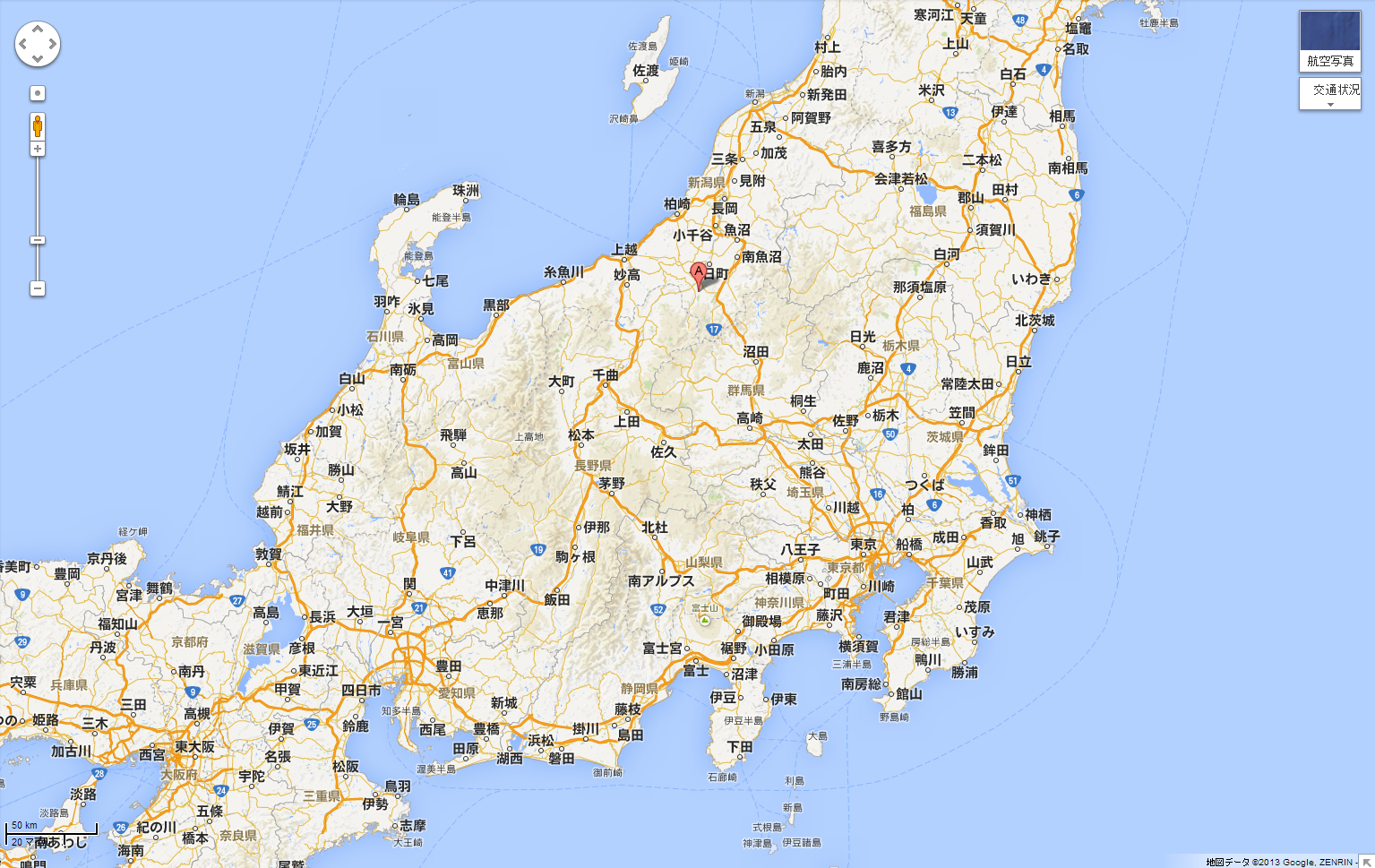
It took 9 hours from Kyoto by car.
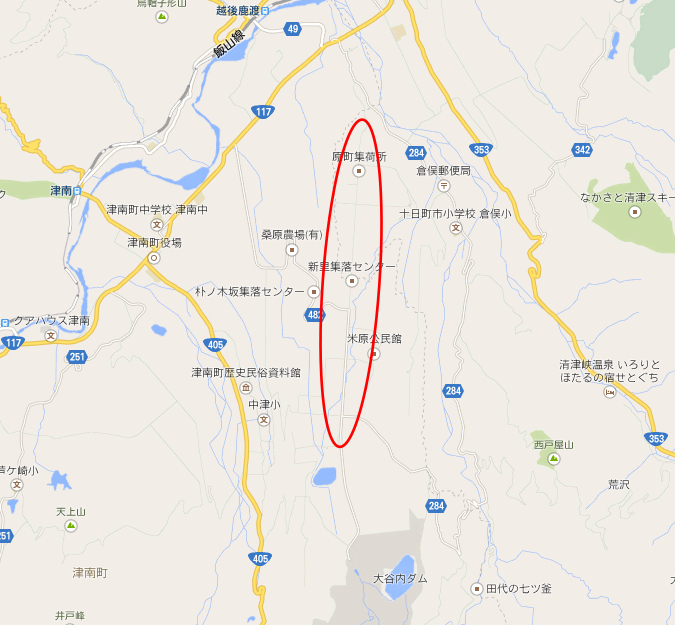
Seiichi's slope illusion pages
Slope illusion 13 (Slope-ascending water in Tsunan-twon, Niigata-prefecture, Japan)
Slope illusion 12 (Slope-ascending water in Ujitawara-town, Kyoto-prefecture, Japan)
Slope illusion 11 (Skewed staicase of the Shigaraki Ceramic Cultural Park, Shiga, Japan)
Slope illusion 10 (Skewed staicase of Shomaru railway station, Saitama, Japan)
Slope illusion 9 (Illusory slope in Minamitane-town, Tanegashima-island, Kagoshima, Japan)
Slope illusion 8 (Illusory slope in Nakatane-town, Tanegashima-island, Kagoshima, Japan)
Slope illusion 7 (Danjo-zaka and Okyo-zaka in Amakusa-Shimojima, Kumamoto, Japan)
Slope illusion 6 (Slope-ascending river in Miyama, Nantan, Kyoto, Japan)
Slope illusion 5 (Ghost slope in Okagaki, Onga-county, Fukuoka, Japan)
Slope illusion 4 (Slope-ascending water in Tanushimaru, Kurume, Fukuoka, Japan)
Slope illusion 3 (moving-back slope in Hashikami, Aomori, Japan)
Slope illusion 2 (Mysterious slope in Towa, Iwate, Japan)
Slope illusion 1 (Mystery zone in Yashima, Takamatsu, Kagawa, Japan, etc.)